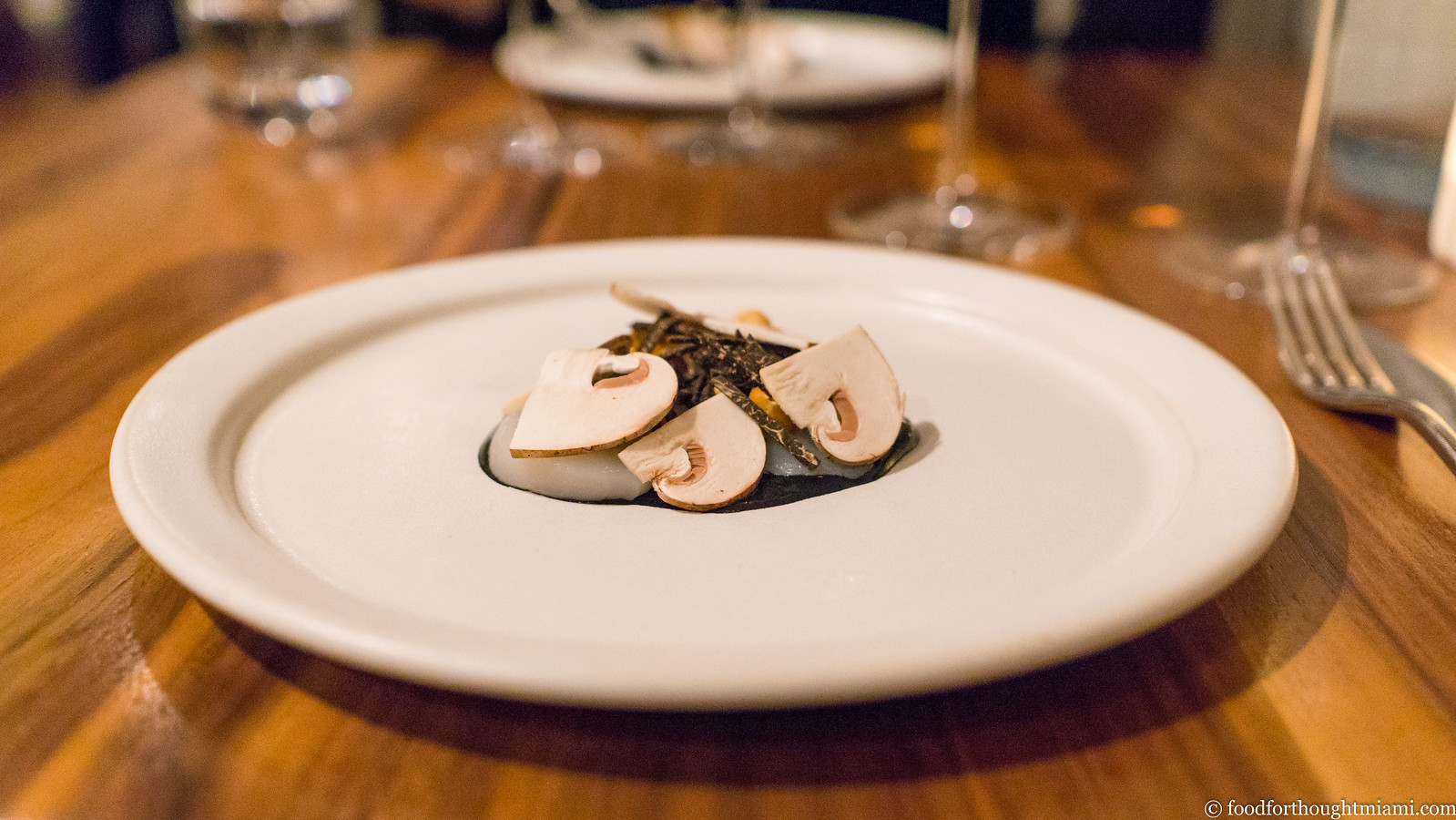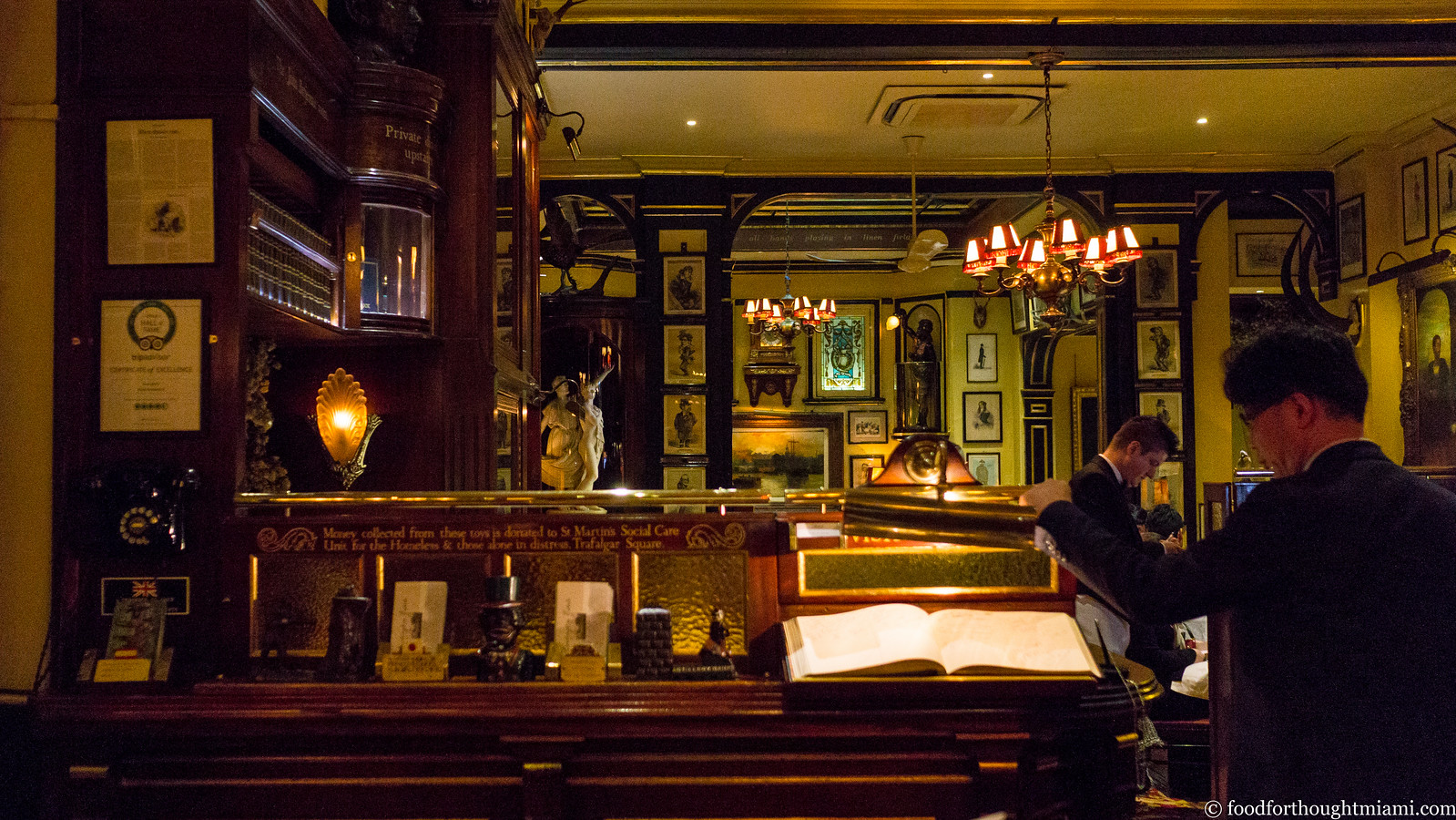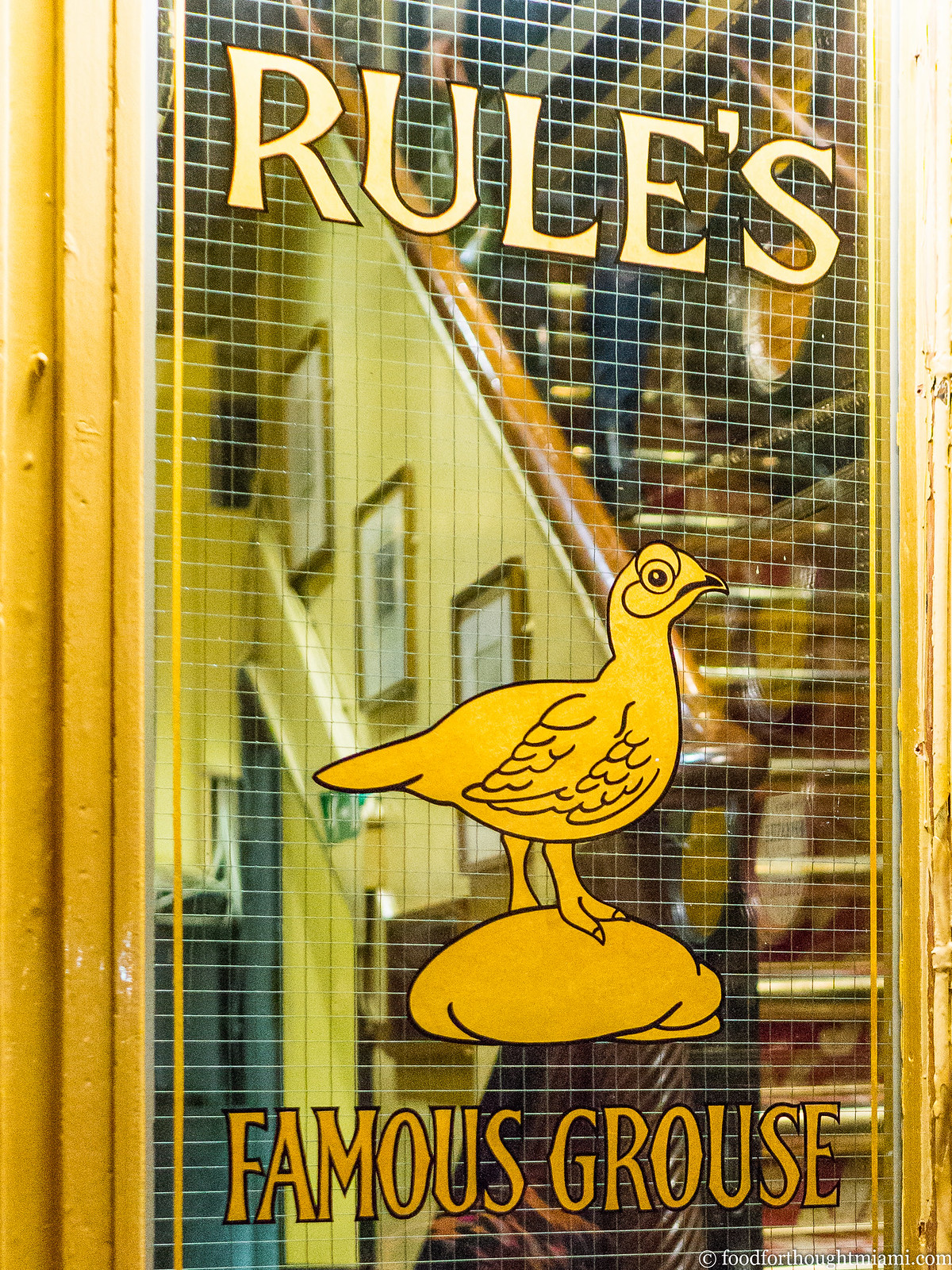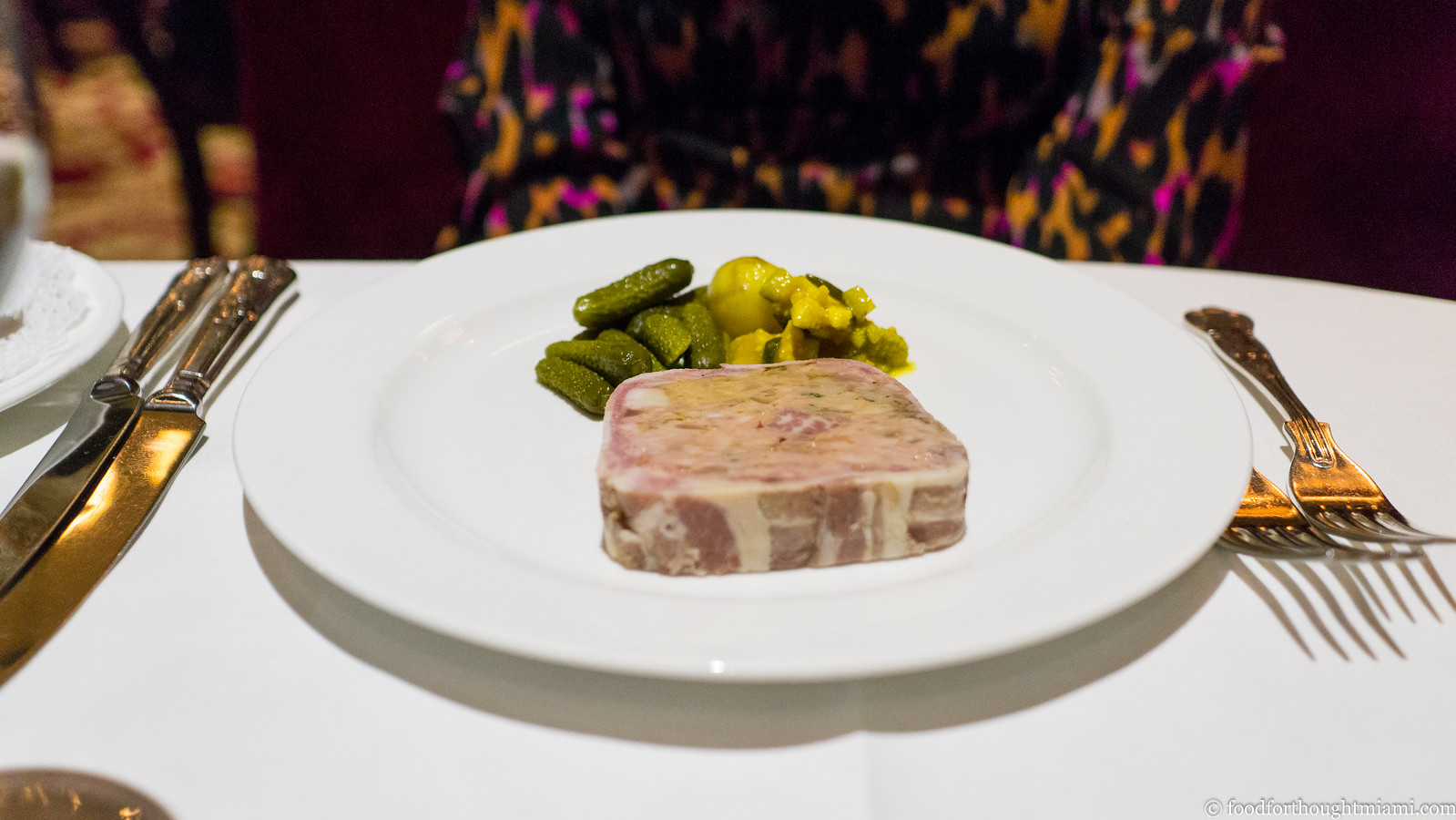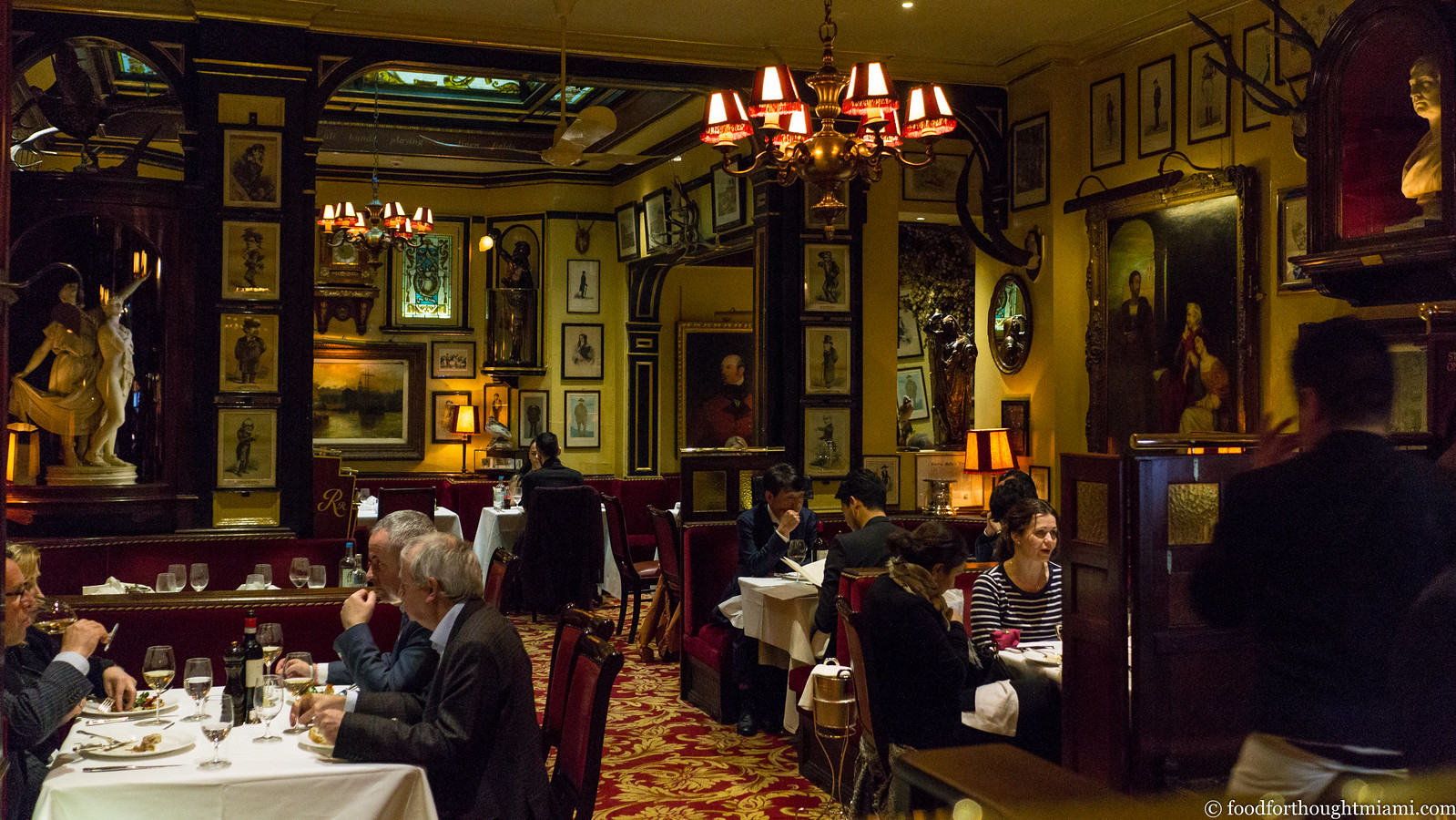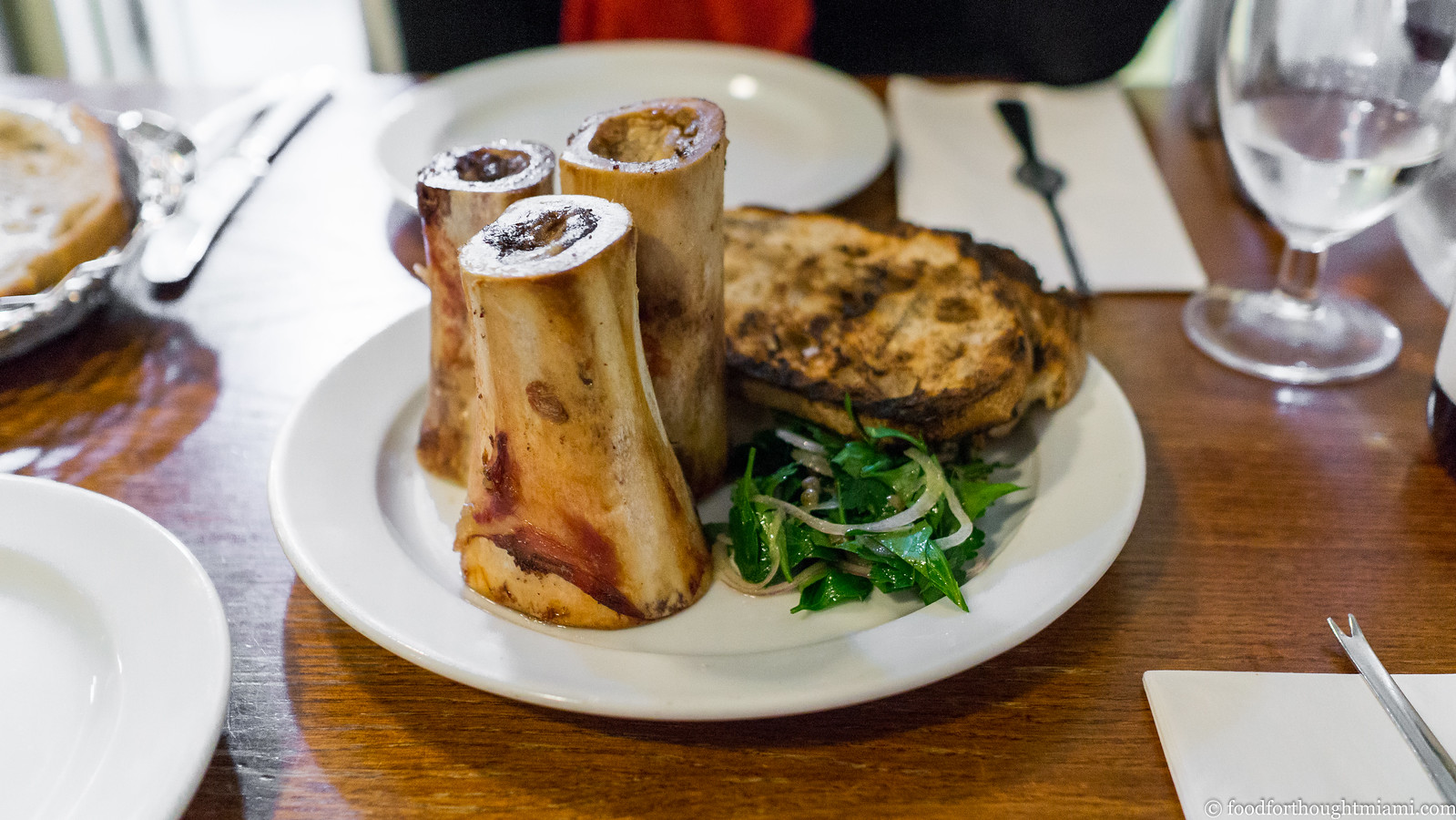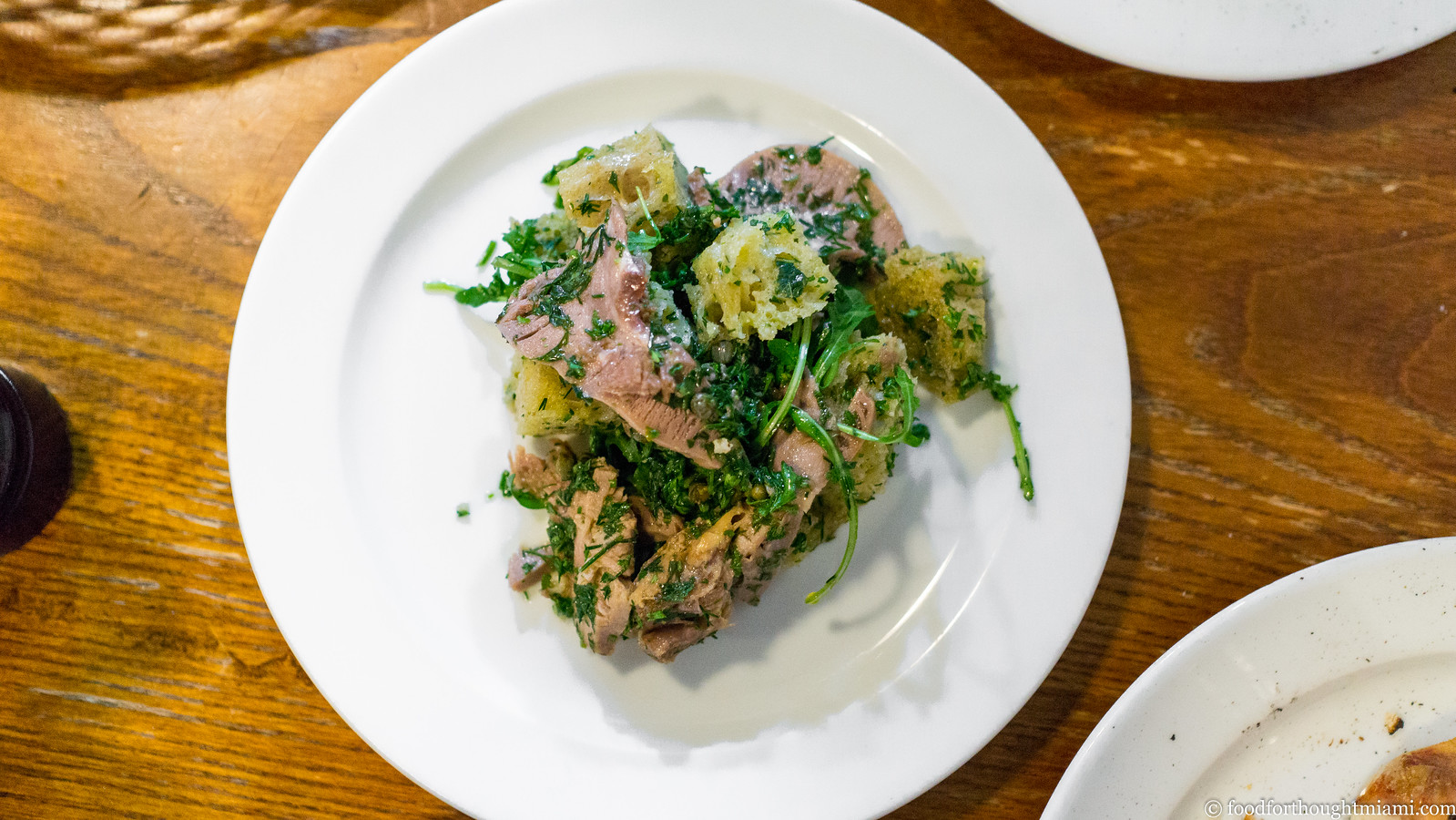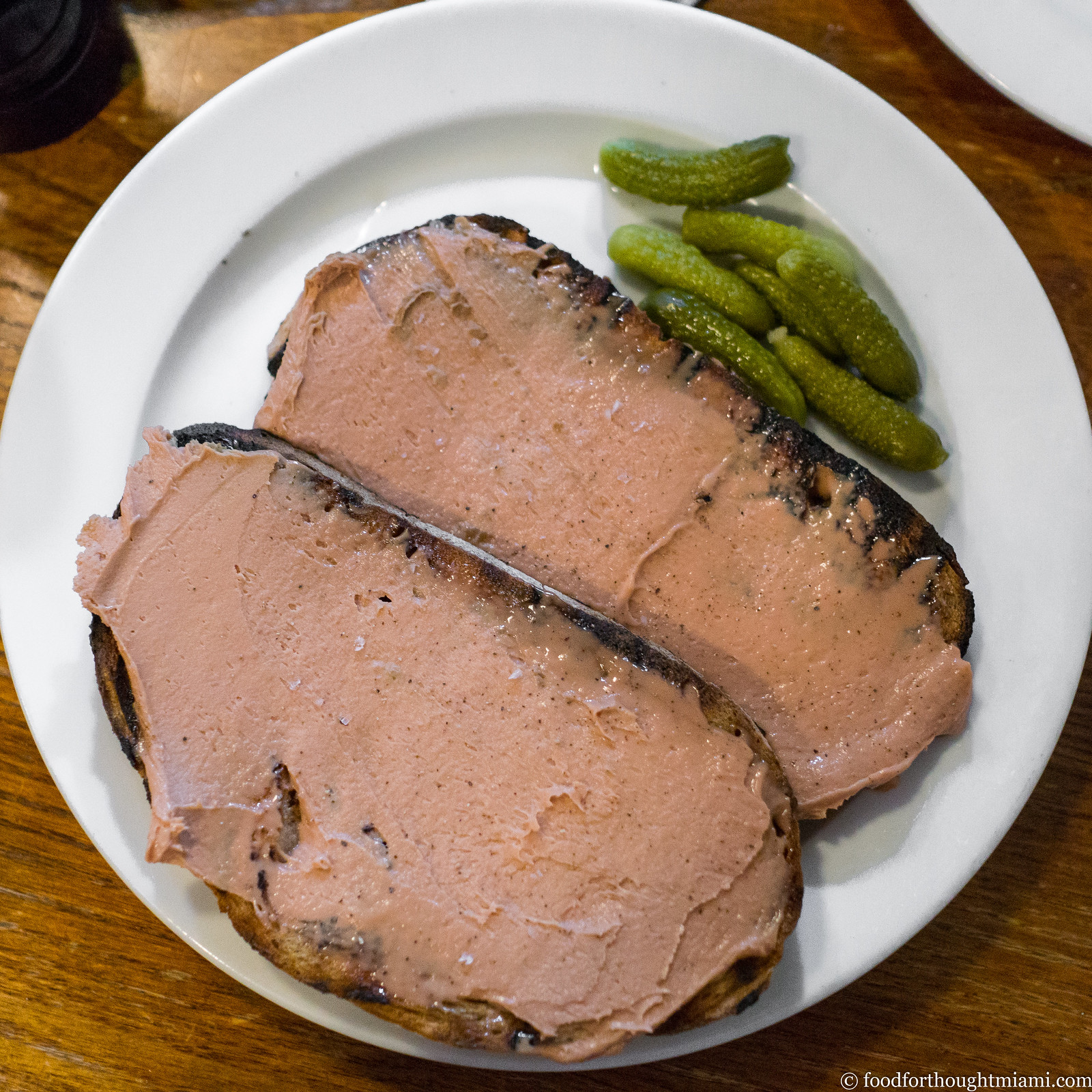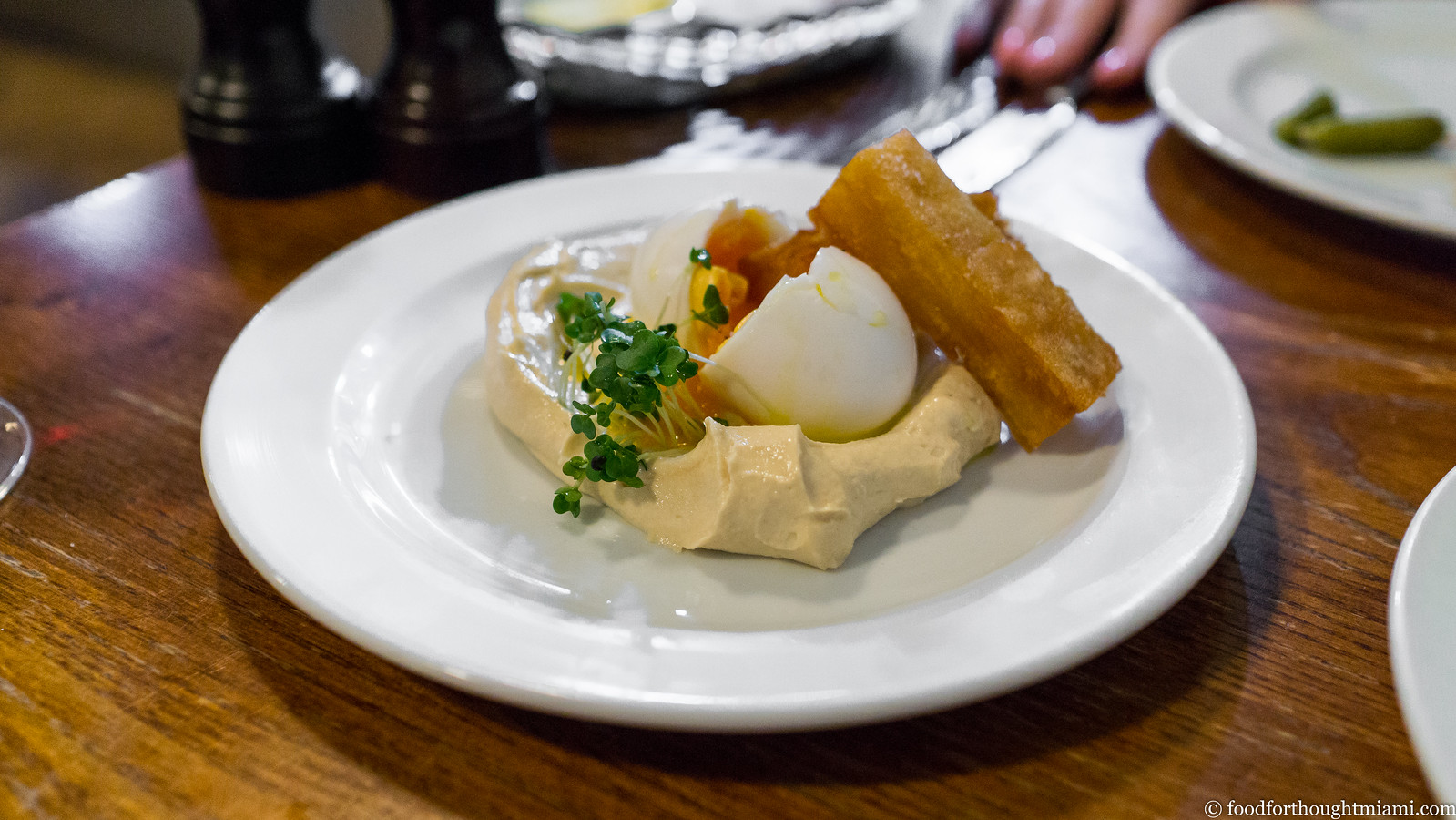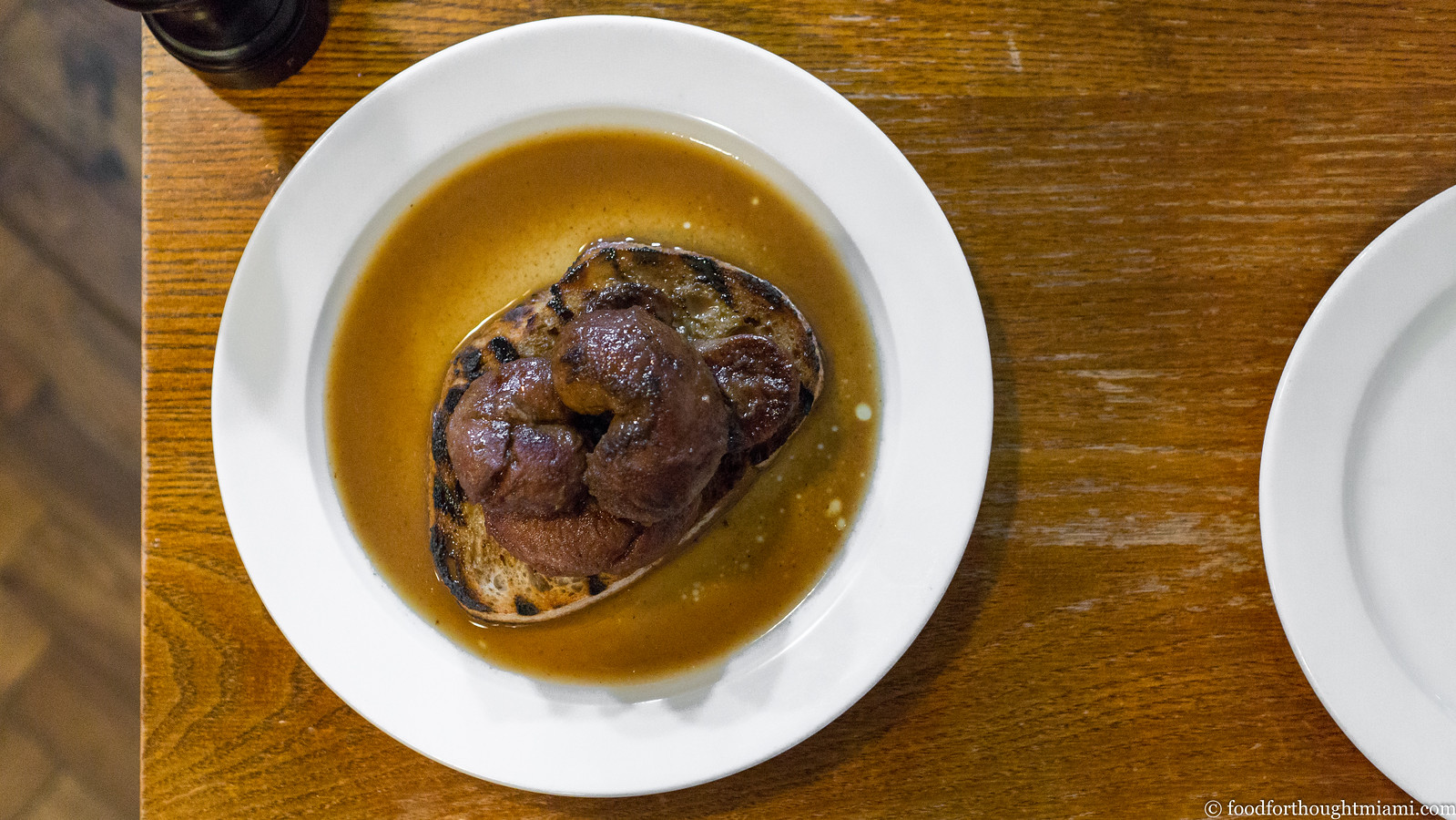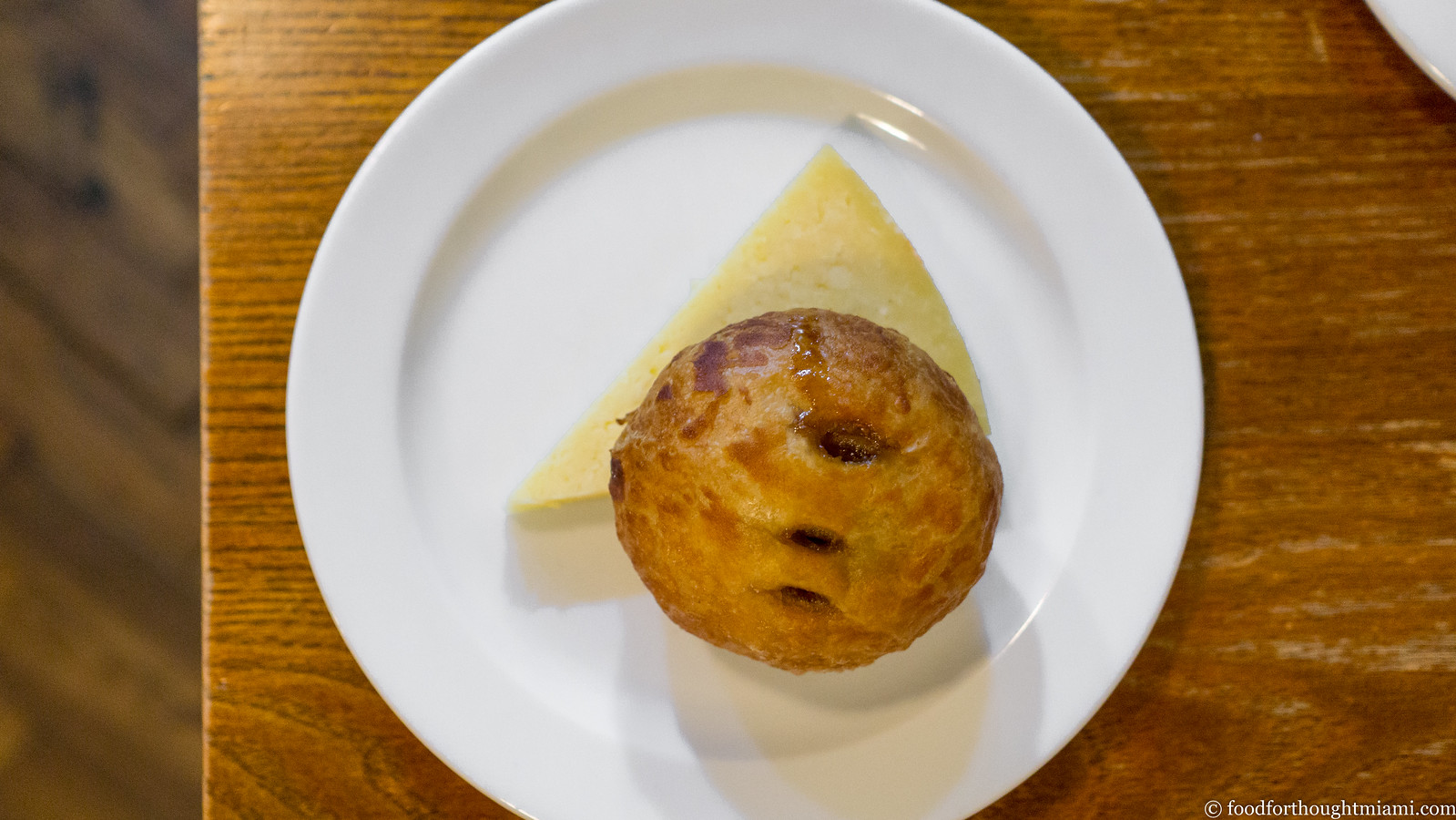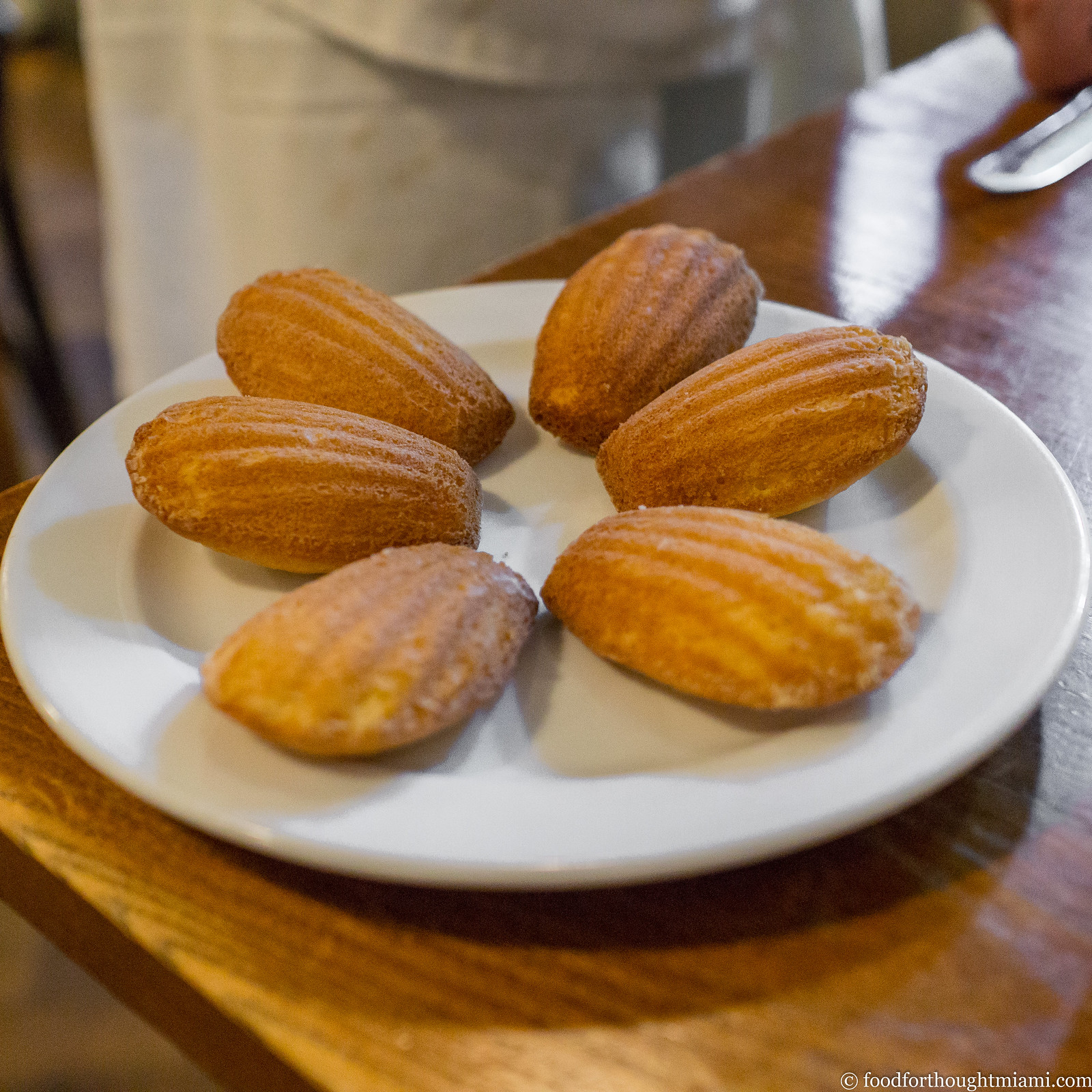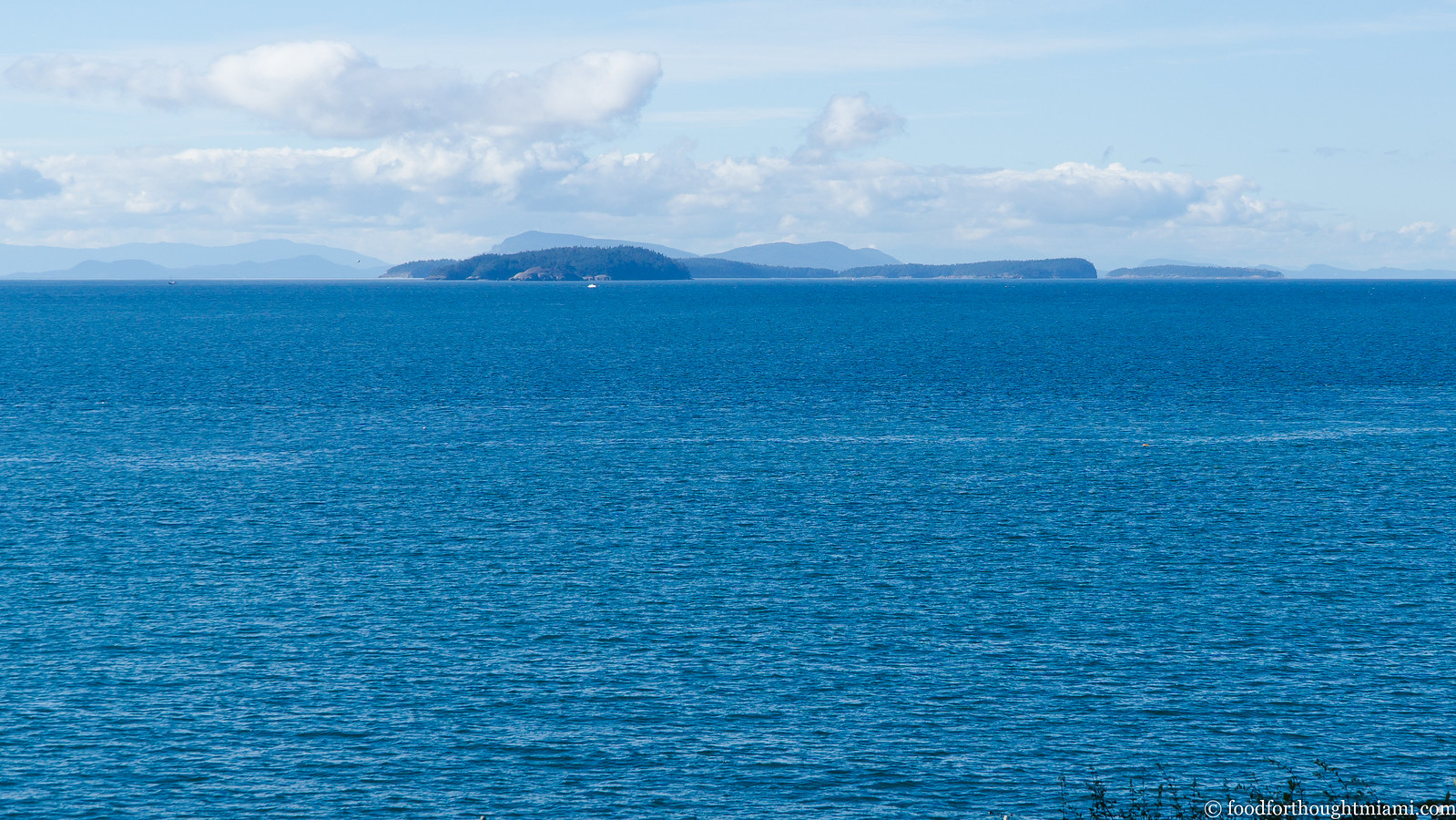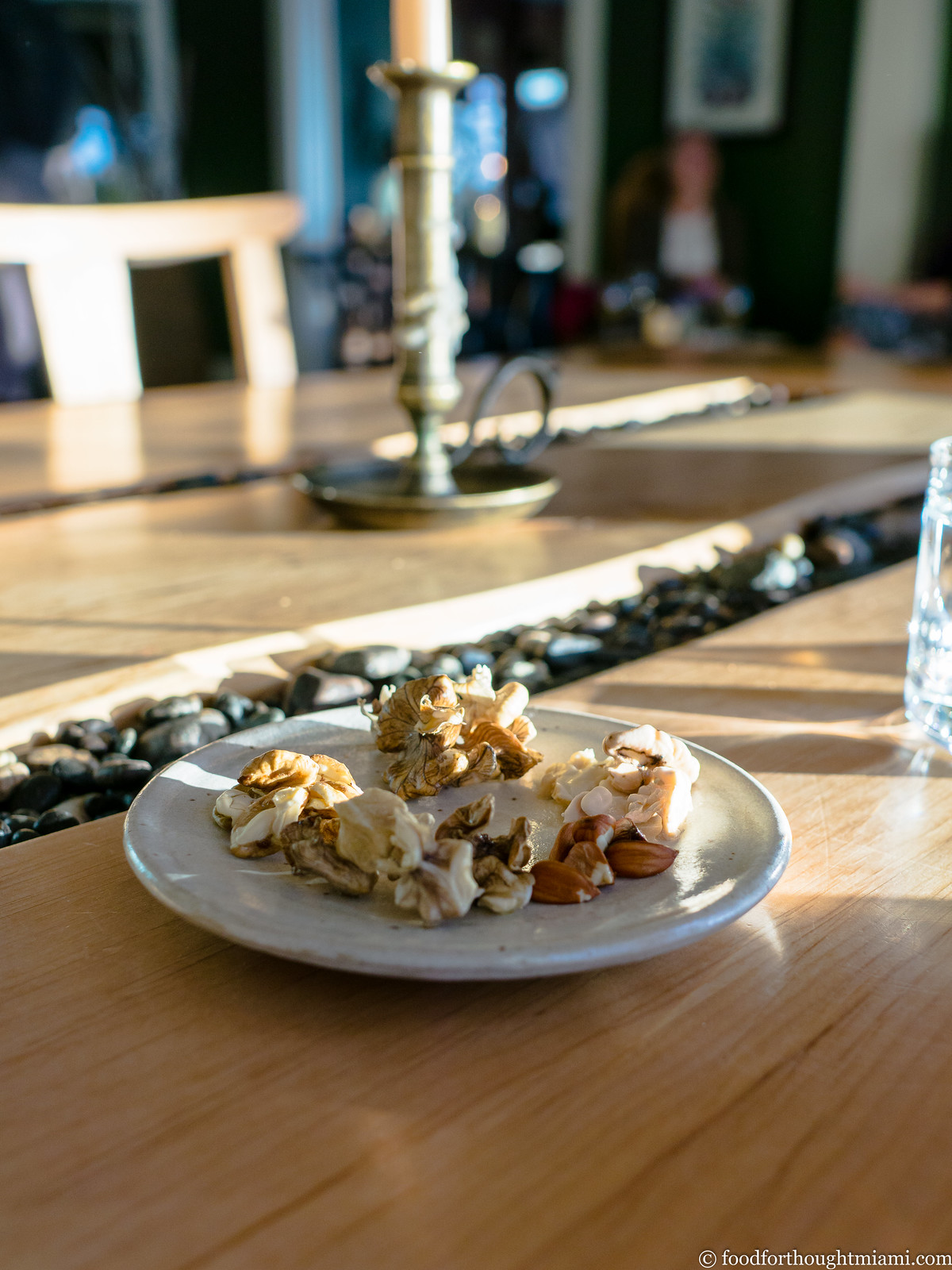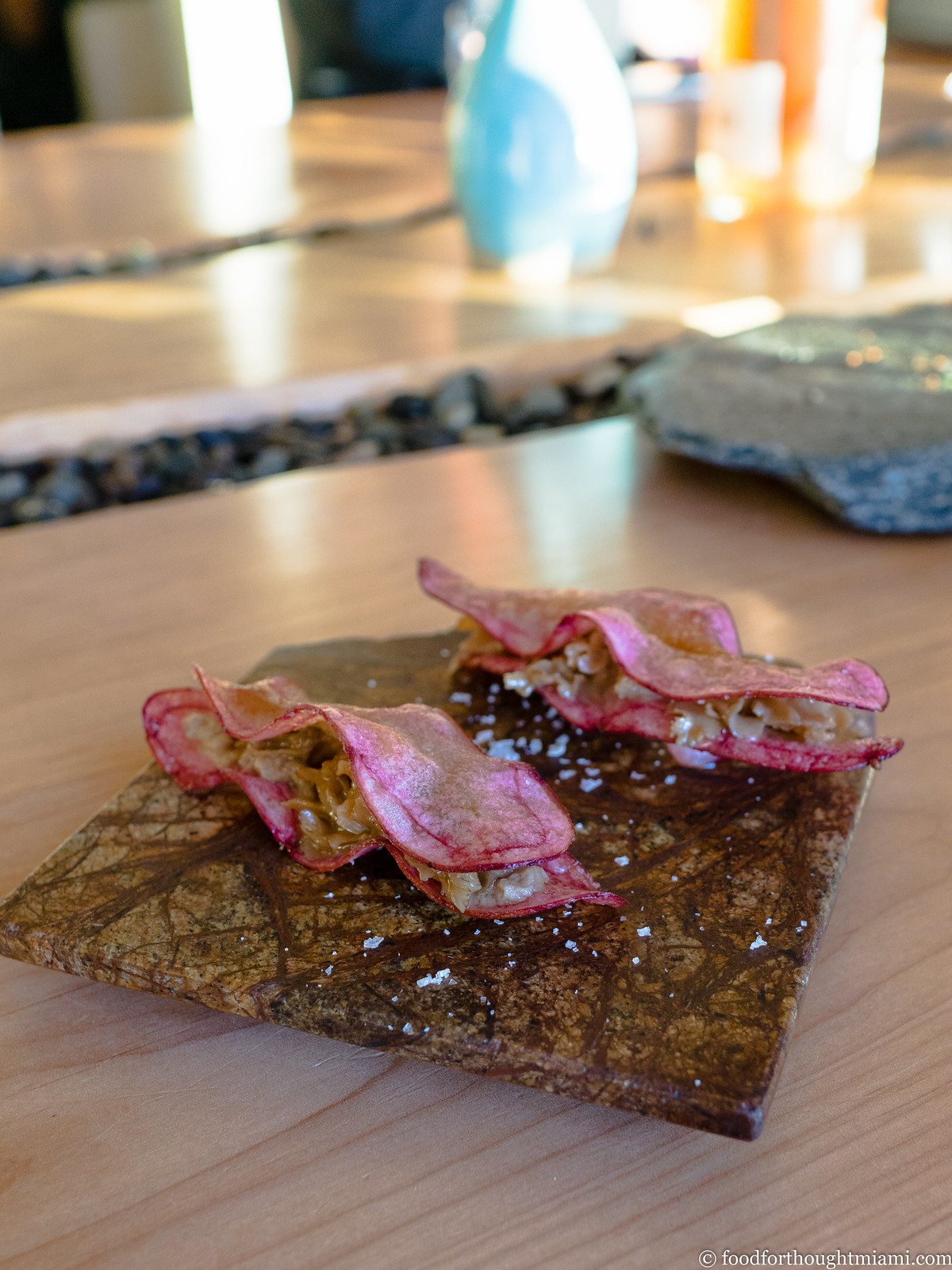Showing posts with label further afield. Show all posts
Showing posts with label further afield. Show all posts
Wednesday, October 18, 2017
é by José Andrés | Las Vegas
There's a phenomenon on social media lately that whenever a celebrity chef expresses an opinion on political or social issues, a chorus of those whose sensibilities diverge insist that the chef should "stay in their lane." In other words, talk about food all you want, but keep your politics to yourself. The reaction seems inherently ridiculous to me – if you don't like it, the "unfollow" button is a simple, elegant solution – and hypocritical. Unless, that is, all these "stay in your lane" folks are actually career political scientists themselves, or perhaps professional life coaches.
I bring this up here because Chef José Andrés is a powerful retort to that kind of nonsense, someone whose talk has been backed up by meaningful, thoughtful action. The day after Hurricane Harvey cleared Texas, he was in Houston feeding people. A month later when Hurricane Maria decimated Puerto Rico, he was there within days serving meals. Over the past weeks, he's mobilized a brigade of food trucks and canteen kitchens to serve 100,000 meals a day, while getting minimal support from the federal government, in a territory with an almost entirely broken infrastructure.[1]
But this shouldn't come as a surprise. His charity work is not simply a reaction to recent events, but a commitment that dates back to at least 2010, when he founded a non-profit, World Central Kitchen, as a response to a devastating earthquake in Haiti. When, in mid-2016, then-candidate Trump described Mexicans as criminals and rapists, Andrés – an immigrant and naturalized U.S. citizen himself – didn't just gripe about it on Twitter. He pulled out of a multi-million dollar restaurant deal at a Trump property in DC, risking the inevitable lawsuit from the litigation-happy candidate. (Andrés countersued, and the case settled in April on undisclosed terms.)
All of which is to say: José Andrés can cruise in any lane he wants, as far as I'm concerned.
While the work he's doing now in Puerto Rico is infinitely more important, those lanes do actually include chef and restaurateur as well. Andrés' restaurants include the Michelin two-star Minibar, along with a mini-empire of places in DC, LA, Miami, and Las Vegas, the last of which I visited recently for a conference.[2] While there, I squeezed in a dinner at é by José Andrés, an 8-seat "restaurant within a restaurant" inside Jaleo at the Cosmopolitan.
(You can see all my pictures in this é by José Andrés - Las Vegas flickr set).
The format of é is patterned after the original iteration of Minibar in DC with a dollop of Vegas glitz. Its roughly 20-course tasting menu is unabashedly inspired by the creations of Andrés' mentor, Ferran Adrià, with whom Andrés worked at El Bulli in Spain before going on to tremendous success in the U.S. I'd visited é once before, though I hadn't realized how long ago it had been – nearly six years. The room, centered by a polished metal chef's counter surrounded by walls lined with tiny drawers and odd tchotchkes, hasn't changed much. One of the chefs said it was meant to make you feel like "You're inside Chef Andrés' head." (It kind of does.) The menu was almost entirely different, though there were some echoes of prior meals.
Guests are corralled at a table in Jaleo and offered a drink before the dinner at é starts. After a few minutes, the hostess divulges that the centerpiece on the table is also the first course: a cracker flavored with black olive, stuck with edible flowers.
Then upon entering the cloistered dining room, a cocktail: sangria, frozen and powdered to a slushie-like consistency, with compressed melon, sour cherry pearls, and fresh mint leaves.[3]
A cheese course of sorts: a soft-frozen manchego and beet rose topping a walnut cracker, "stones" of idiazabal cheese with a jamón and rosemary glaze nestled atop a bowl of river stones; and a "pizza" of San Simon cheese topped with oregano cream, dried tomato, and fresh shaved truffle.
(continued ...)
Sunday, June 11, 2017
The Clove Club | London
We only had three nights in London on this last trip, our first visit in a decade, but I think our dinner choices – Rules, St. John, and on our final night, The Clove Club – successfully captured a meaningful cross-section. Each of these places might seem quite different on the surface – the red velvet banquettes and gold-framed portraits of Rules are entirely unlike the abbatoir-like black-and-white starkness of St. John, which is equally unlike the cool modernism of the Clove Club. Though the spare, contemporary plates at Clove Club might appear to be from a different world than the straightforward, traditional dishes at Rules, there's a thread which runs through them: a deeply ingrained dedication to British ingredients.
The Clove Club, which started as a living room supper club run by chef Isaac McHale, has made itself a home in a 150-year old building that used to be the Shoreditch Town Hall. Now, you enter into a smart, cozy bar – where, it should be noted, several smaller dishes from the tasting menu are available on an a la carte basis, something I'll be keeping in mind the next time in town. You pass from the bar into an equally smart dining room, the centerpiece of which is a shiny open kitchen. Sometimes these layouts feel like a stage, where the diners are meant to gaze in rapt wonder upon the chefs. This one feels more like the loft of your tasteful London friend, the one with a fetish for blue subway tile and 1960's Scandinavian furniture. It's elegant, in an understated way; but more important, it's comfortable – it still feels like it could be a living room supper club, though in a pretty fancy living room.
Dinner can be either a five-course affair, currently priced at £75, or a more elaborate tasting menu for £110, which was the route we chose.
(You can see all my pictures in this The Clove Club - London flickr set; these are from a meal in February 2017).
The meal starts with a series of snacks, the first of which is something of a signature dish: buttermilk-marinated fried chicken, dusted with pine salt, and presented nestled in a woven basket filled with pine branches. It is like the platonic ideal of a chicken nugget. A glass of Gusbourne Blanc de Blanc accompanies the snacks, and I'm pleasantly surprised to discover that very respectable sparkling wine is coming from this side of the English Channel, in West Sussex.
McHale turns his sights to his native Scotland next with a warm haggis bun, the funk of offal tempered by warm spices and a dusting of vinegar powder. Local ingredients take a Japanese turn with a rectangular laver (seaweed)[1] crisp that serves as the vehicle for a rich, oily mackerel tartare.
(continued ...)
Monday, April 3, 2017
Rules Restaurant | London
Fergus Henderson may have helped convince the world that British food was worthy of attention with his restaurant, St. John (some more thoughts on St. John here). But at Rules, they were never in any doubt.
Rules bills itself as the oldest restaurant in London. Over the past two centuries, it's been owned by only three families: Thomas Rule opened it in 1798; just before World War I, one of his descendants decided to move to France, and arranged a swap with a Brit running a restaurant in Paris named Tom Bell; and then in 1984, Bell's daughter sold the restaurant to its current owner John Mayhew.
The dining room, with its red velvet-wrapped, gold-piped banquettes, polished wood dividers, oil portraits and old cartoons on the walls,[1] the occasional marble bust here and there, looks every bit the part. If not for the bona fides of its history, the stereotypically posh decorations would seem almost laughable. I adore the place.
We first came here on a family trip to London more than ten years ago. Our daughter was about six years old at the time; she did not adjust well to the jet lag, and within an hour she was sliding under the table.[2] This time around, I was the one who wanted to throw a fit when I learned that we had just missed game season. Through the present owner's inheritance of the Lartington Estate in northern England and relationships with local game dealers, Rules sometimes has a glorious assortment of wild things on the menu – its "famous grouse," but also woodcock, pheasant, partridge, wild duck, hare and more. Alas, not on this visit.
(You can see all my pictures in this Rules - London flickr set).
Before getting to the food, I highly recommend a visit upstairs to the Edward VII Room, a/k/a the cocktail bar, a snug spot with a carved wooden bar counter, a few tables and couches, and a fine assortment of hunting murals and trophies adorning the walls. The bar program is run by Mike Cook, and his crew can handily make the classics like a pitch-perfect Negroni. But they also have their own creations, like the intensely aromatic Lucia Sciarra, named after a character from the last James Bond film, Spectre.[3]
Once I'd recovered from having missed game season (my recovery aided by a pleasant cocktail), I focused my attention on the menu, which also helped ease my disappointment. You get the sense it could have been written a hundred years ago. Chef David Stafford shows occasional flashes of whimsy, like a duck leg "pastilla" paired with a spiced duck breast, but for the most part he proudly and lovingly cooks traditional British dishes. And this he does exceedingly well.
So there's potted shrimps, a mound of tiny, tender brown crustaceans caught in Morecambe Bay, preserved in butter and spices in the way it's been done for hundreds of years. There's Middlewhite pork terrine, which makes use of a rare heritage breed of pig that originated in Yorkshire, served simply with picallili and cornichons. The shrimp taste of shrimp, the pork tastes of pork, and I couldn't possibly be happier.
For her main, Mrs. F chooses the Uig Lodge smoked salmon, sourced from a smokery on the far northern reaches of the Outer Hebrides. The salmon is served with fat slabs of brown bread and offered either with or without scrambled eggs, but surely this is a rhetorical question? The salt and smoke on the fish whisper rather than shout, and its texture is all silk, matched by the soft, creamy eggs.
For me, a real taste of tradition: a steamed suet pudding. It arrives at the table completely unadorned, looking like a doorstop from a giant's castle. Cut it open, and beneath a layer of dense, chewy suet pastry, a stew of venison, red wine and chestnut mushrooms issues forth. There's nothing light or delicate here, but it has a brawny beauty all its own; it's rich, and hearty, and sticky, and satisfying, and I love that such things still exist in this world.
Along with our mains, we have some bronze-crested, buttery-interiored potatoes Anna, as well as a perky salad with sprightly pale sprigs of frisée, crispy bacon lardons, toasty croutons and a bracing shallot vinaigrette.[4]
We always enjoy ending a meal with some good cheeses, but Mrs. F is not so much a fan of the blue-veined varieties. So I'm pleased to hear that the cheese plate, which features a few English cheeses served with biscuits and a sweet shallot jam, can be supplemented with a portion of the Cropwell Bishop Stilton. The entire wheel is brought to the table, from which they will scoop the paste onto your plate until you say "enough!" Made by a third-generation creamery in Nottingham, it's more creamy than crumbly, tangy enough to balance the fat but not so much to blow out your sinuses, and just lovely stuff.
There's a certain danger in a place like this getting weighed down by its historical baggage, but Rules manages to avoid that. It doesn't feel, or taste, like a museum piece, but rather like a living, breathing restaurant that just happens to be from another century. But good food is timeless; I hope Rules remains so as well.
Rules Restaurant
35 Maiden Lane, Covent Garden, London, England
+44 0 20 7836 5314
[1] There's also a massive mural on one wall of a stern-faced Margaret Thatcher looking as if she belongs on the prow of a ship.
[2] She didn't actively misbehave. She just sort of ran out of steam, started to fade and get a little teary-eyed, and quietly mewled "I'm broken." We still say this when it gets a little too late in the evening for any of us.
[3] The concoction includes Star of Bombay Gin, Lillet Blanc, Benedictine, Gammel Dansk Bitter Dram, and a lemon twist. You can see Cook making one here. Delicious. You can also see Rules make a cameo appearance in a scene from Spectre which was shot at the restaurant. Rules has made many other literary appearances, including in novels by Evelyn Waugh and Graham Greene, among others. Speaking of things literary, I think it's just wonderful that the restaurant proudly republishes an absolutely scathing review by Kingsley Amis entitled "Where Disaster Rules," written sometime in the 1970's, on their website ("There are cheaper eating-places than Rules where the atmosphere and service are so pleasant that they drive out other impressions. Far from the case here; but then I find it hard to imagine an establishment Elysian enough to dispel the memory of two of the most disgusting full-dress meals I have ever tried to eat in my life.")
[4] We also drink a really nice wine, the 2010 Rossignol-Fevrier "Robardelle," a premier cru vineyard in Volnay from a producer which I don't think gets distributed in the U.S. Happily, the wine list at Rules mostly shares my predilections for Burgundies, Rhones, and sub-$100 wines.
[2] She didn't actively misbehave. She just sort of ran out of steam, started to fade and get a little teary-eyed, and quietly mewled "I'm broken." We still say this when it gets a little too late in the evening for any of us.
[3] The concoction includes Star of Bombay Gin, Lillet Blanc, Benedictine, Gammel Dansk Bitter Dram, and a lemon twist. You can see Cook making one here. Delicious. You can also see Rules make a cameo appearance in a scene from Spectre which was shot at the restaurant. Rules has made many other literary appearances, including in novels by Evelyn Waugh and Graham Greene, among others. Speaking of things literary, I think it's just wonderful that the restaurant proudly republishes an absolutely scathing review by Kingsley Amis entitled "Where Disaster Rules," written sometime in the 1970's, on their website ("There are cheaper eating-places than Rules where the atmosphere and service are so pleasant that they drive out other impressions. Far from the case here; but then I find it hard to imagine an establishment Elysian enough to dispel the memory of two of the most disgusting full-dress meals I have ever tried to eat in my life.")
[4] We also drink a really nice wine, the 2010 Rossignol-Fevrier "Robardelle," a premier cru vineyard in Volnay from a producer which I don't think gets distributed in the U.S. Happily, the wine list at Rules mostly shares my predilections for Burgundies, Rhones, and sub-$100 wines.
Saturday, April 1, 2017
St. John Bread and Wine | London
Until recently, British food has been saddled with a terrible reputation. I'm reminded of the old George Carlin joke about heaven and hell:
"In heaven, the Italians are the lovers, the French cook the food, the Swiss run the hotels, the Germans are the mechanics, and the English are the police. In hell, the Swiss are the lovers, the English cook the food, the French run the hotels, the Italians are the mechanics, and the Germans are the police."
That reputation, I've always thought, has been undeserved. Even thirty years ago, when I spent a summer in Oxford "studying," I ate very well. Ploughman's lunches with good cheese and bread, rich steak and kidney pies, crisp, steamy fish and chips wrapped in newspaper, fiery Indian and Jamaican food – what's not to like?
Over the past couple decades, general sentiment seems to have shifted, and now London is regarded as one of the world's top dining destinations. Partly that's been driven by international attention for this very moneyed, lucrative market; one of the odd things about planning a recent brief visit to both London and Paris (three days in each) was realizing that many of Paris' top chefs have opened outlets in London so that, in Epcot-like fashion, you could arguably taste some of the best of Paris without ever crossing the Channel. But even more so, it's been driven by English chefs' internal reflection: recognizing, and promoting, great British cookery.
One of the individuals who was formative in that shift was Fergus Henderson. His restaurant, St. John, which opened in 1995, and his cookbook, first published in 1999 as "Nose to Tail Eating: A Kind of British Cooking" (released in the U.S. in 2004 as "The Whole Beast: Nose to Tail Eating") are mostly recognized for being a manifesto on the joys of offal and whole-animal utilization. They are most definitely that, but they also are an ode to traditional British dishes – things like cock-a-leekie soup and bath chaps and game birds and Eccles cakes – and the value of native ingredients.
I'd never been. So it was the first dinner reservation I made for this trip.
We actually booked at St. John Bread and Wine, a sibling to the original St. John around the corner from Smithfield Market. Bread and Wine, originally intended to be a bakery and wine shop (thus the name), makes its home across from the Spitalfields Market,[1] and is slightly more casual than the mothership. More of the menu is offered as small plates, and they ascribe to the "dishes come out as they're ready and are meant for sharing" school of service. Since this gave us an opportunity to sample broadly, it was perfect.
(You can see all my pictures in this St. John Bread and Wine flickr set).
Of course, you have to start with the roasted marrow bones – Henderson's most famous dish, one that has been lovingly duplicated countless times in countless restaurants around the world, one that Anthony Bourdain declared his "always and forever choice" for his Death Row meal. The formula is now well-known: roasted femur bones; toasted bread; a pile of parsley salad; a mound of coarse sea salt. Scoop the oozy marrow from the bone, spread on to the toast, dress with a sprinkle of salt and a pinch of the salad, and enjoy. I've had it dozens of times, but never until now the original. And yes, it's the best: the marrow at the magic borderline between solid and liquid, the acid and salt and herbaceous bite of the salad right on the edge of too aggressive without crossing the line, with just the right punch of caper and shallot. I can't say it better than Fergus himself:
"Do you recall eating Raisin Bran for breakfast? The raisin-to-bran-flake ratio was always a huge anxiety, to a point, sometimes, that one was tempted to add extra raisins, which inevitably resulted in too many raisins, and one lost that pleasure of discovering the occasional sweet chewiness in contrast to the branny crunch. When administering such things as capers, it is very good to remember Raisin Bran."Though not as famous, the other dishes we tried exhibited the same winning combination of good, honest ingredients, intense, robust flavors, and attentive execution.
I loved these tender curls of lamb's tongues wrapped around cubes of bread, all enrobed in a bright, verdant green sauce, like a meaty panzanella salad. Picking at a smoked fish nearly always brings me joy, and the minimalist approach here – the unadorned back end of a smoked mackerel, served simply on a plate with a potato salad given a sinus-clearing blast of mustard dressing – is my kind of happy meal.
Another testament to the joy of simplicity: slabs of toast spackled with a rich, intense mousse of duck livers and foie gras. It's just nearly too much; then you take a bite of cornichon, your appetite is restored, and you go back for more. The smoked cod's roe is like salt, smoke and sea wrapped in silk, but maybe the best part are the crispy batons fashioned from thin layers of potato perched on top. We finished with deviled kidneys: chewy, soft, springy, and ferrous, served over toast drenched with cooking juices spiked with mustard powder and Worcestershire sauce.[2]
We ordered dessert whilst draining the last of a bottle of Beaujolais, starting first with St. John's version of a classic – Eccles cake. There are whole families of traditional British desserts of which I know nothing, this being a good example. Every time I'd peruse the online menu at St. John I'd see it, and so of course I had to order it. The sweetness of the "cake" – a flaky pastry wrapped around a filling of sticky currants – is balanced by an accompanying slab of fresh, crumbly, sharp, faintly salty Lancashire cheese. Then a few minutes later, a batch of warm, airy madeleines, fresh from the oven. We trusted our server for something to drink with these, and our trust was rewarded with a glass of Pineau de Charentes.
Honestly, I wondered if St. John would live up to its nearly mythical reputation. Bourdain, in his foreword to the U.S. release of Nose to Tail, acknowledges, "My enthusiastic rant in my book A Cook's Tour made him sound like George Washington, Ho Chi Minh, Lord Nelson, Orson Welles, Pablo Picasso, and Abbie Hoffman – all rolled into one." And Henderson, both in interviews and on the page, evinces such unbridled enthusiasm, humble charm, and subtle wit that it's hard to imagine not liking his food. This is a man who can make curly parsley sound good![3]
But this was just a joyous meal: great ingredients; straightforward, bold, intense flavors; presented without any fanfare but prepared with subtle finesse. In my version of heaven, Fergus is welcome to cook the food.
St. John Bread and Wine
94-96 Commercial Street, London
020 7251 0848
[1] While Smithfield is still a functioning meat market, Spitalfields has been refurbished into a shopping mall.
[2] I rarely get to eat kidneys, and even more rarely get to eat properly prepared kidneys, but even so, their sort of crumbly, bouncy texture still puts them fairly low on my Favorite Offal list. Tripe, or livers, or sweetbreads, or hearts, would all rank before kidneys in my book.
[3] "As the swish, swish, swish of bunches of flat Italian parsley is to be heard in kitchens across the land, it seems time to celebrate the strength and character of the indigenous curly parsley. Its expression of chlorophyll and well being, strong flavor, slightly prickly texture, and its structural abilities enable such things as Parsley Sauce."
[2] I rarely get to eat kidneys, and even more rarely get to eat properly prepared kidneys, but even so, their sort of crumbly, bouncy texture still puts them fairly low on my Favorite Offal list. Tripe, or livers, or sweetbreads, or hearts, would all rank before kidneys in my book.
[3] "As the swish, swish, swish of bunches of flat Italian parsley is to be heard in kitchens across the land, it seems time to celebrate the strength and character of the indigenous curly parsley. Its expression of chlorophyll and well being, strong flavor, slightly prickly texture, and its structural abilities enable such things as Parsley Sauce."
Saturday, December 31, 2016
best dishes of 2016: part 3
We're coming in for a landing here – the final segment of my Best Dishes of 2016 (you can read Part 1 and Part 2 here).
(You can see pictures of all of them in this Best Dishes of 2016 flickr set).
Let me start here with the kind of superlative I'm usually loathe to state: Brad Kilgore's Alter was my favorite restaurant of the year, and for my money, the best restaurant in Miami right now (read my thoughts and see all my pictures from Alter). Brad's cooking is creative, smart, beautiful, lush without being overly heavy, and most important of all, flat out delicious.
Now a year and a half in, he's not afraid to change things up either. The dishes that appear here were from the last lunch service at Alter on October 1 (partly a result, I have to imagine, of the attention drawn by Brad's newest project, Brava at the Arsht Center). Then last month, Alter quietly switched its dinner service to a predominantly tasting-menu format, with either a 5-course $69 or 7-course $89 options, and only a very abbreviated list of a la carte alternatives. And now another new piece, just added in the past few days: a more casual a la carte menu for the no-reservations outdoor bar area.
A recent twitter exchange hit on a nugget of truth: more often than not, when a dish is "revisited" or "reinvented" (or worse, "deconstructed"), the end result pales in comparison to the original.
The classic Spanish snack, pan con tumaca (a/k/a pan con tomate or pa amb tomàquet), is a simple thing: grilled or toasted bread, rubbed with raw garlic and tomato, drizzled with olive oil, and sprinkled with salt. And yet with the right ingredients – crusty bread, ripe juicy tomato, fruity peppery olive oil – it is magically good, and difficult to improve upon.
The version I had this weekend at Alter, though, manages it. A thin plank of sourdough, golden on its surface but with still a whisper of tenderness at its center. A daub of tomato butter, warmed with Aleppo pepper. Soft, crushed cherry tomatoes, bleeding their juices. Slivers of pickled garlic, as thin as Paulie cut in prison. Red vein sorrel – pretty, sure, but also providing a bit of grassy, tart contrast.
The same lunch featured another successful "reinvention" – this incredibly luxurious version of brandade. The base of the dish was a rich, Robuchon-esque potato purée, enriched with local burrata (presumably from Mimmo's Mozzarella), and topped with flakes of silky smoked black cod, crisp puffed potatoes, and sweet-savory onion jam.
One of my all-time favorite meals was a visit to Blaine Wetzel's Willows Inn, off the coast of Washington State on tiny Lummi Island. I was thrilled to have an opportunity to make a return visit in October (read my thoughts and see all my pictures from Willows Inn). Sometimes those magical experiences are like lightning in a bottle, never to be captured again. But the second time was every bit as good, maybe better, than the first. Wetzel is a special chef and this is a special place.
There's nothing particularly showy or ostentatious about chef Blaine Wetzel's cooking. Quite the opposite, he willingly sets his ego aside and let the ingredients take center stage. That's not to diminish the skill with which he handles the wonderful things he finds in this little corner of the world, but rather to say that he really knows how to tell a story of time and place through a meal, eschewing unnecessary embellishment in favor of clarity.
An old favorite: a fragile, crisp crepe shell encasing steelhead roe and a maple cream, capped with finely snipped chives on the ends. This is just perfect.
Followed by a new (for me), perfect bite: puffy, savory doughnuts, filled with silky smoked black cod, and sprinkled with sea salt and dried seaweed. I could eat a dozen of these.
With the sun setting over the Rosario Strait outside, there was another burst of color at our table: what Wetzel calls an herb tostada. The "tostada" is a mustard green leaf, fried in a delicate tempura style batter. It's spread with an oyster and herb emulsion, and then then topped with an assortment of vividly flavored leaves and flowers: nasturtium, shiso, basil, mint, brassica flowers, and more. It's incredibly delicate but intensely flavored, with each bite yielding a different surprise. This is a beautiful, wonderful dish.
One final thought. If you go to Willows Inn, you'll likely stay at Willows Inn, and if you stay at Willows Inn, a word of advice: don't skip breakfast. It is outstanding. Served family style, the lineup varies from day to day. Ours started with some fresh, luridly magenta-hued plum juice, served in a coupe glass, followed by some local doughnut peaches with creamy fresh yogurt topped with toasted hazelnut butter. Then a really glorious breakfast smorgasbord: a runny soft boiled egg; a pile of buckwheat crepes; fat slices of gravlax with fresh farmer cheese; house-smoked bacon, pancetta, and an aged, spice-rubbed cheese; kale wilted in flaxseed oil with coarse salt; sweet plum jam, tangy late-season rhubarb compote, silky fig custard drizzled with honey; a fat slab of creamy butter. Assemble as you wish. I can't imagine a better send-off.
Myumi is not your typical sushi bar (read my thoughts and see all my pictures from Myumi). In fact, it's a truck – a converted FedEx delivery truck, currently stationed in a lot in Wynwood. From that truck, they serve an omakase only (chef's choice) menu with only two choices: do you want to spend $40 or $60? The omakase-only format means they know exactly what they need to buy, so they buy some very good stuff: fish and shellfish straight in from Japan, uni and ikura from Alaska, tuna from Ecuador. Some items get just a brush of shoyu, others more elaborate garnishes.
Maybe my favorite bite from my last visit was this nigiri of aji, the pleasantly oily, fatty fishiness of the minced horse mackerel counterbalanced by the zing of ginger and scallion, then topped with toasted sesame seeds.
(continued ...)
(You can see pictures of all of them in this Best Dishes of 2016 flickr set).
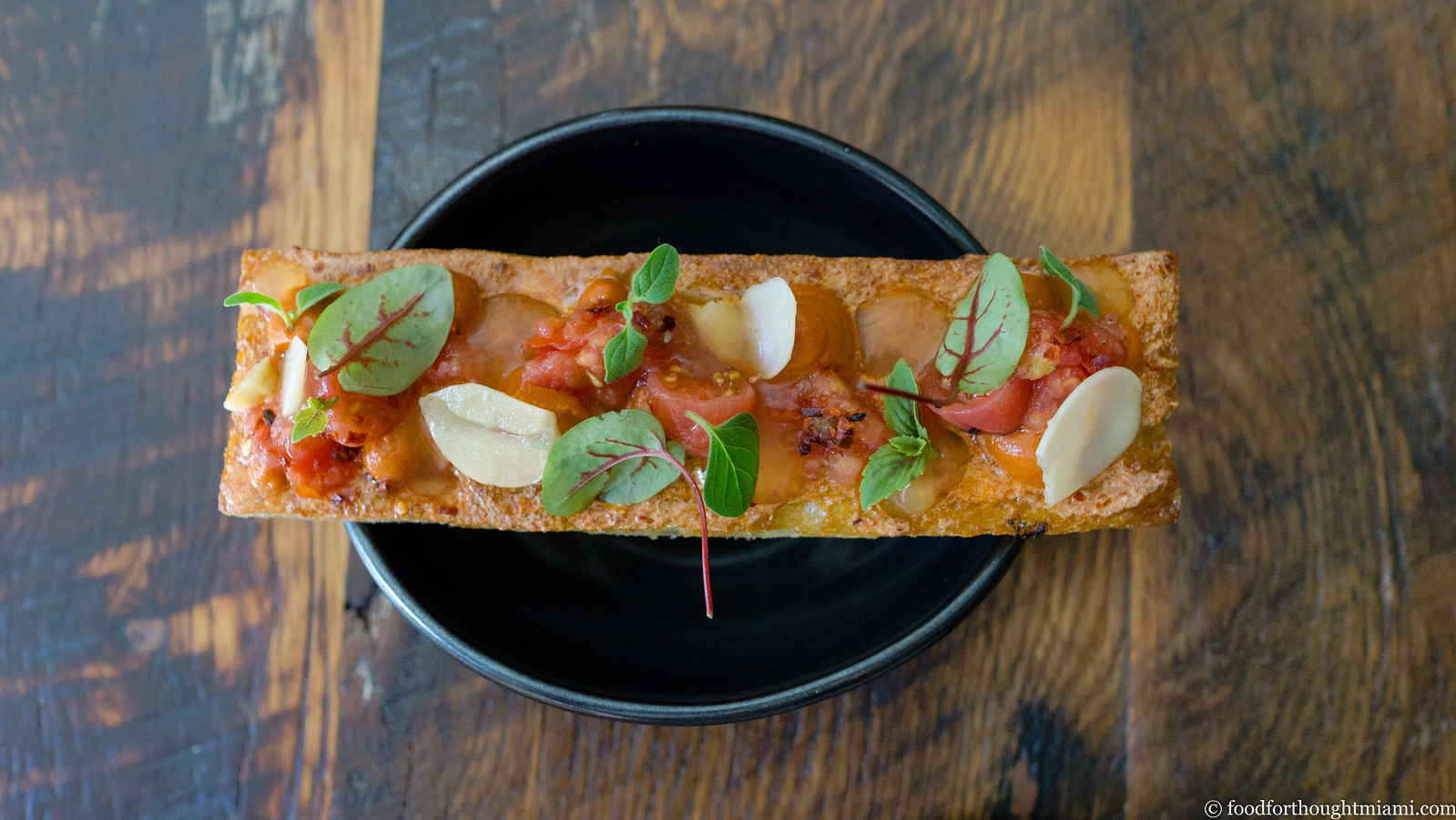 |
| pan con tumaca - Alter |
Now a year and a half in, he's not afraid to change things up either. The dishes that appear here were from the last lunch service at Alter on October 1 (partly a result, I have to imagine, of the attention drawn by Brad's newest project, Brava at the Arsht Center). Then last month, Alter quietly switched its dinner service to a predominantly tasting-menu format, with either a 5-course $69 or 7-course $89 options, and only a very abbreviated list of a la carte alternatives. And now another new piece, just added in the past few days: a more casual a la carte menu for the no-reservations outdoor bar area.
A recent twitter exchange hit on a nugget of truth: more often than not, when a dish is "revisited" or "reinvented" (or worse, "deconstructed"), the end result pales in comparison to the original.
The classic Spanish snack, pan con tumaca (a/k/a pan con tomate or pa amb tomàquet), is a simple thing: grilled or toasted bread, rubbed with raw garlic and tomato, drizzled with olive oil, and sprinkled with salt. And yet with the right ingredients – crusty bread, ripe juicy tomato, fruity peppery olive oil – it is magically good, and difficult to improve upon.
The version I had this weekend at Alter, though, manages it. A thin plank of sourdough, golden on its surface but with still a whisper of tenderness at its center. A daub of tomato butter, warmed with Aleppo pepper. Soft, crushed cherry tomatoes, bleeding their juices. Slivers of pickled garlic, as thin as Paulie cut in prison. Red vein sorrel – pretty, sure, but also providing a bit of grassy, tart contrast.
 |
| potato purée, smoked cod - Alter |
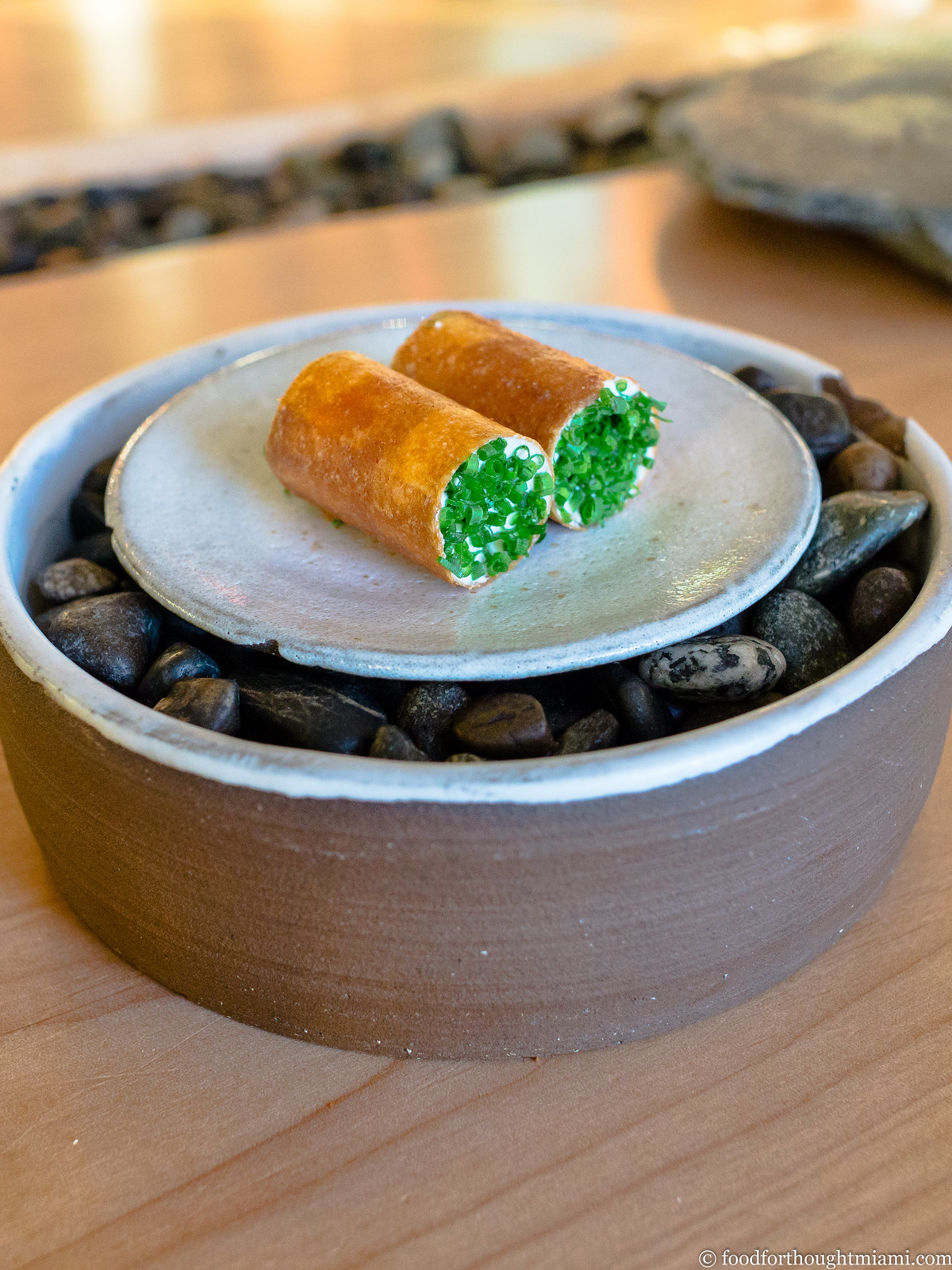 |
| steelhead roe, maple cream, chive, crispy crepe - Willows Inn |
There's nothing particularly showy or ostentatious about chef Blaine Wetzel's cooking. Quite the opposite, he willingly sets his ego aside and let the ingredients take center stage. That's not to diminish the skill with which he handles the wonderful things he finds in this little corner of the world, but rather to say that he really knows how to tell a story of time and place through a meal, eschewing unnecessary embellishment in favor of clarity.
An old favorite: a fragile, crisp crepe shell encasing steelhead roe and a maple cream, capped with finely snipped chives on the ends. This is just perfect.
 |
| smoked black cod doughnuts - Willows Inn |
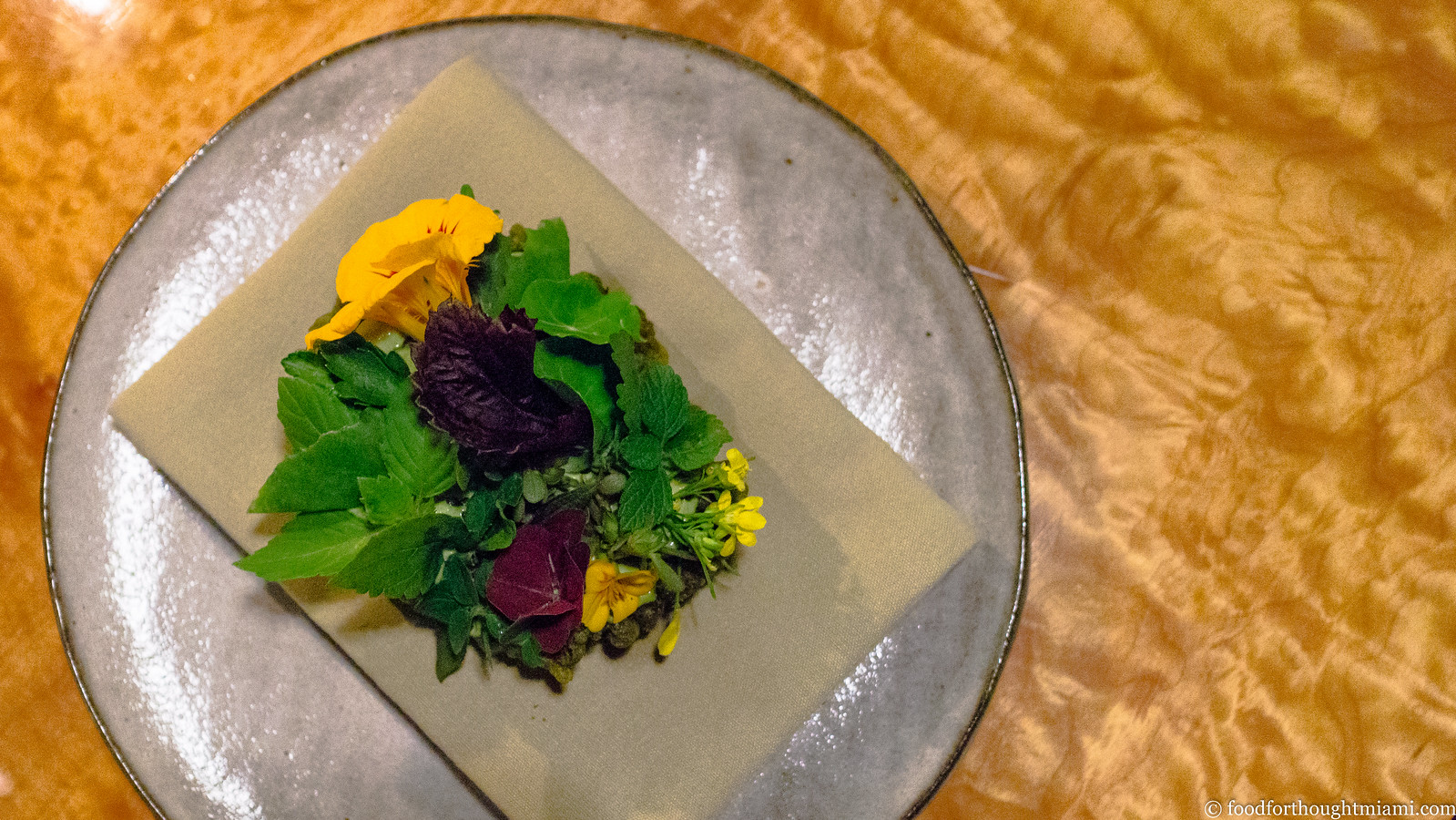 |
| herb tostada - Willows Inn |
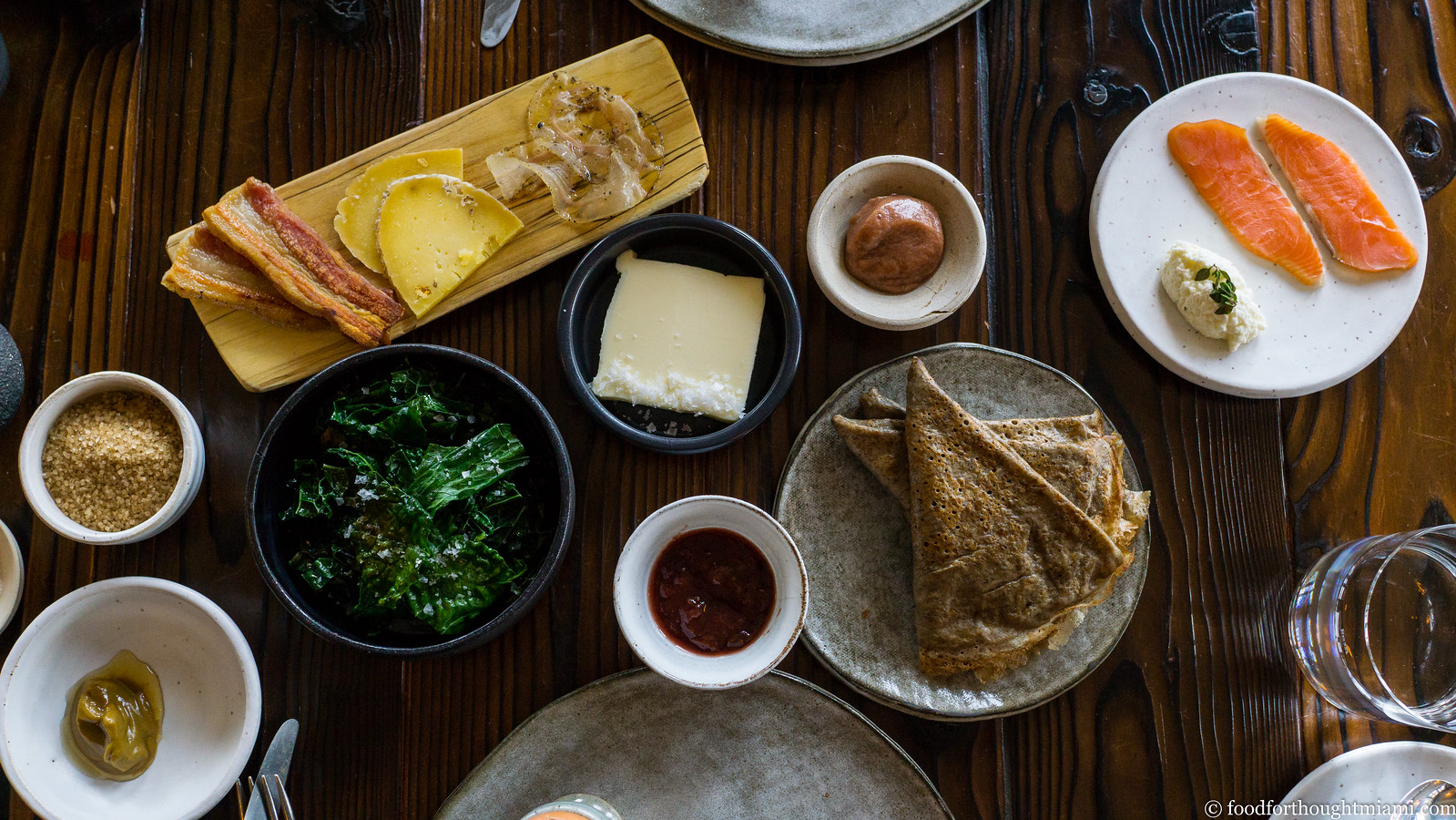 |
| breakfast spread - Willows Inn |
 |
| aji chopped with ginger and scallion - Myumi |
Maybe my favorite bite from my last visit was this nigiri of aji, the pleasantly oily, fatty fishiness of the minced horse mackerel counterbalanced by the zing of ginger and scallion, then topped with toasted sesame seeds.
(continued ...)
Friday, December 30, 2016
best dishes of 2016: part 2
It's a tradition, here and everywhere else in the known universe, to do year-end "best of" lists. It's cheesy and facile, but it's also a good opportunity to reflect on the year that's passed – the highs and the lows. In a year that had a brutal number of untimely demises, the Miami restaurant world had some as well. The first four dishes in this Part 2 of my Best Dishes of 2016 (click here for Part 1) were all served at restaurants that are no longer with us.
(You can see pictures of all of the dishes listed in this Best Dishes of 2016 flickr set).
The story picks up here in late February with our second Cobaya dinner in conjunction with the South Beach Wine and Food Fest, which was hosted by Alex Chang at the Vagabond (read my thoughts and see all my pictures from the Cobaya / SoBeWFF dinner). Chang and the Vagabond parted ways several months ago. He's now back out in Los Angeles but still has some Miami connections: he'll be heading up the new Broken Shaker / Freehand restaurant in L.A., The Exchange. But it was actually Andrew Zimmern's dish that was one of my favorites of that meal, and of the year:
Most folks probably know Zimmern from his James Beard Award winning Travel Channel program, Bizarre Foods. What they may not know is that the guy can also flat out cook. In addition to a silky vichyssoise with a citrus-cured oyster that was served as guests gathered around the Vagabond's poolside bar, he also was responsible for my favorite course of the evening: a riff on an Italian classic, vitello tonnato, done here with thin slices of veal tongue, a tangy anchovy-laden dressing, citrus segments, chile oil spiked fried capers and slivered olives for some punch, and crispy chickpea crackers for scooping.
Whenever we do a Cobaya dinner on our own, people generally know they're going to be in for something a bit different and adventurous. But seats at the SoBeWFF dinner get filled by all sorts of folks, including many who may not quite know what they're in for. So one of the highlights of the evening for me was Zimmern making sure to wait until everyone was about four bites into the dish before giving its description, and letting everyone know that he'd used veal tongue. I'd guess that about a quarter of the diners' jaws dropped. It makes me even more grateful for the support and open-mindedness of the group who come out to our regular dinners.
One of the really great things about this event was to see the teamwork of the chefs and their crews in the kitchen. As Carlo Mirarchi and his pastry chef Sam Short started to plate their dessert, everyone else jumped onto the line to help. The end result was outstanding: a nutty, burnt lemon cake, surrounded by a couple globes of coconut "fluff," with puddles of fragrant meyer lemon curd, a sort of celery jam, and sweet poppy seeds. Too often, these savory-leaning desserts feel contrived; but here, everything improbably made perfect sense together.
Another casualty of 2016: Michelle Bernstein's Michy's, which last year renamed itself Cena by Michy (read my thoughts and see all my pictures from Cena). She's still plenty active and engaged, between Crumb on Parchment, a Michy's pop-up for Art Basel, TV gigs, and her work for Common Threads, but it is a real loss to Miami that Bernstein closed what has been one of the city's best restaurants since it opened ten years ago. Nobody cooks foie or sweetbreads like Michy.
The decor and menu have changed at Cena by Michy (f/k/a Michy's), but at least one thing remains the same: if there is a sweetbread dish on the menu at a Michelle Bernstein restaurant, it will be outstanding. Case in point: this sweetbread milanese, like a cloud encased in a crispy shell. It's served with a tangy sort of stew of cherry tomatoes and fennel ribbons, with a wonderful little surprise: pickled strawberries, which provide little jolts of refreshing, sweet-tart contrast.
Michael Pirolo's Bazi, a high-end Asian venture for the chef whose Italian restaurant Macchialina is one of my favorites on the Beach, wasn't around long enough for me to really mourn its closing (read my thoughts and see all my pictures from Bazi). Truth is, I only got there once, for a multi-course "kaiseki" dinner he did for a small seating at the bar. There were several very good dishes, and one in particular stood out.
This is the kind of thing a chef does because they really want to, and maybe because they're a little crazy. Let's not dwell too long on how much this truly resembles a traditional Japanese kaiseki dinner (short answer: not too much). Instead, let's talk about the best thing I ate there: the clams and rice dish Pirolo served as one of the courses.
In this one dish, Pirolo ties together his Italian background and his Japanese ambitions. Diced razor clams are combined with chewy but tender viaolone nano rice, all served in the clam's shell. The rice is prepared in classic "all'onda" fashion, and bound with the clams by an uni vinaigrette which further highlights the flavors of the sea. A shower of fresh lemon balm adds a bright, herbaceous, citrusy note. It's a beautiful dish.
Many of the best things I ate this past year were found in Miami, though not necessarily from Miami chefs. Here's another from an Alter collaborative dinner, this time with Virgilio Martinez of Peru's Central (read my thoughts and see all my pictures from the Alter / Central dinner).
"Valley Between Andes" – I later figured out that Martinez's menu at Central features dishes inspired by the products of different elevations of the Peruvian topography. This one included avocado, tree tomato (a/k/a tamarillo), and kiwicha (amaranth seeds). The avocado was so creamy and rich that it almost ate like tender braised beef, napped with a tangy sauce and speckled with the nutty, quinoa-like kiwicha, with shards of translucent, herb-dotted crackers for some textural contrast.
While the Alter dinners are collaborations, Brad Kilgore and the visiting chefs tend to alternate courses rather than create dishes together. Even so, sometimes the inspiration of working together can cause the identities of each chef to fade into the background. I would have been hard pressed to know if this was Kilgore's or Martinez's dish if I hadn't been following the back-and-forth cadence of the menu.
"Fallen Tree" – Brad started with a caramelized tranche of heart of palm as the base of the dish, with the other components evoking a tropical forest floor: snails, dehydrated mushrooms, a tangle of green (seaweed?) moss, a pouffe of spring garlic mousse with pickled honshimeji mushroom "spores" poking up out of it.
(continued ...)
(You can see pictures of all of the dishes listed in this Best Dishes of 2016 flickr set).
 |
| vitello tonnato - Andrew Zimmern at Vagabond Cobaya / SOBEWFF dinner |
Most folks probably know Zimmern from his James Beard Award winning Travel Channel program, Bizarre Foods. What they may not know is that the guy can also flat out cook. In addition to a silky vichyssoise with a citrus-cured oyster that was served as guests gathered around the Vagabond's poolside bar, he also was responsible for my favorite course of the evening: a riff on an Italian classic, vitello tonnato, done here with thin slices of veal tongue, a tangy anchovy-laden dressing, citrus segments, chile oil spiked fried capers and slivered olives for some punch, and crispy chickpea crackers for scooping.
Whenever we do a Cobaya dinner on our own, people generally know they're going to be in for something a bit different and adventurous. But seats at the SoBeWFF dinner get filled by all sorts of folks, including many who may not quite know what they're in for. So one of the highlights of the evening for me was Zimmern making sure to wait until everyone was about four bites into the dish before giving its description, and letting everyone know that he'd used veal tongue. I'd guess that about a quarter of the diners' jaws dropped. It makes me even more grateful for the support and open-mindedness of the group who come out to our regular dinners.
One of the really great things about this event was to see the teamwork of the chefs and their crews in the kitchen. As Carlo Mirarchi and his pastry chef Sam Short started to plate their dessert, everyone else jumped onto the line to help. The end result was outstanding: a nutty, burnt lemon cake, surrounded by a couple globes of coconut "fluff," with puddles of fragrant meyer lemon curd, a sort of celery jam, and sweet poppy seeds. Too often, these savory-leaning desserts feel contrived; but here, everything improbably made perfect sense together.
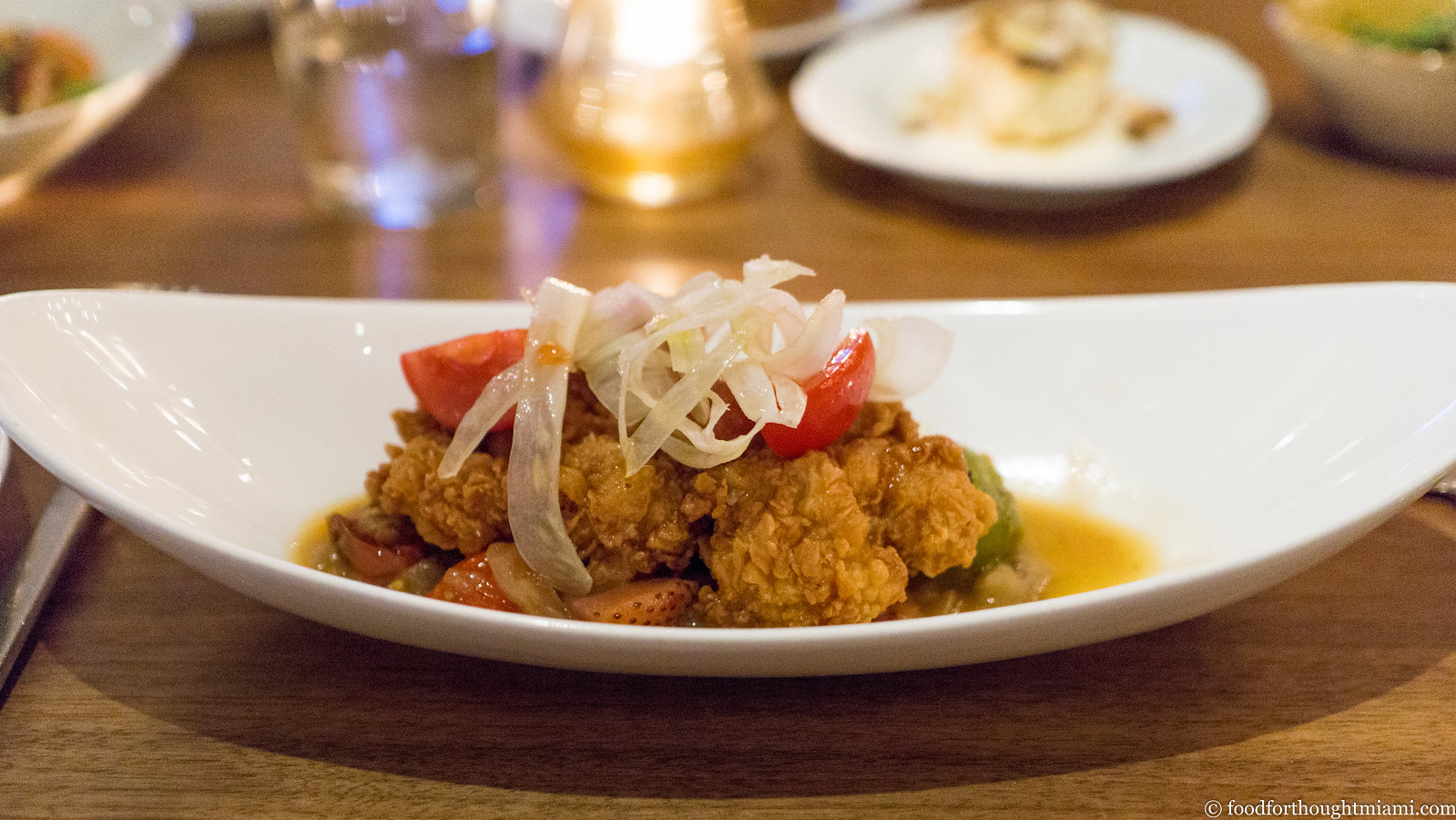 |
| sweetbread, tomato, fennel, pickled strawberry - Cena by Michy |
The decor and menu have changed at Cena by Michy (f/k/a Michy's), but at least one thing remains the same: if there is a sweetbread dish on the menu at a Michelle Bernstein restaurant, it will be outstanding. Case in point: this sweetbread milanese, like a cloud encased in a crispy shell. It's served with a tangy sort of stew of cherry tomatoes and fennel ribbons, with a wonderful little surprise: pickled strawberries, which provide little jolts of refreshing, sweet-tart contrast.
 |
| clams and rice - Bazi |
This is the kind of thing a chef does because they really want to, and maybe because they're a little crazy. Let's not dwell too long on how much this truly resembles a traditional Japanese kaiseki dinner (short answer: not too much). Instead, let's talk about the best thing I ate there: the clams and rice dish Pirolo served as one of the courses.
In this one dish, Pirolo ties together his Italian background and his Japanese ambitions. Diced razor clams are combined with chewy but tender viaolone nano rice, all served in the clam's shell. The rice is prepared in classic "all'onda" fashion, and bound with the clams by an uni vinaigrette which further highlights the flavors of the sea. A shower of fresh lemon balm adds a bright, herbaceous, citrusy note. It's a beautiful dish.
 |
| valley between Andes | avocado, tree tomato, kiwicha - Alter / Central dinner |
"Valley Between Andes" – I later figured out that Martinez's menu at Central features dishes inspired by the products of different elevations of the Peruvian topography. This one included avocado, tree tomato (a/k/a tamarillo), and kiwicha (amaranth seeds). The avocado was so creamy and rich that it almost ate like tender braised beef, napped with a tangy sauce and speckled with the nutty, quinoa-like kiwicha, with shards of translucent, herb-dotted crackers for some textural contrast.
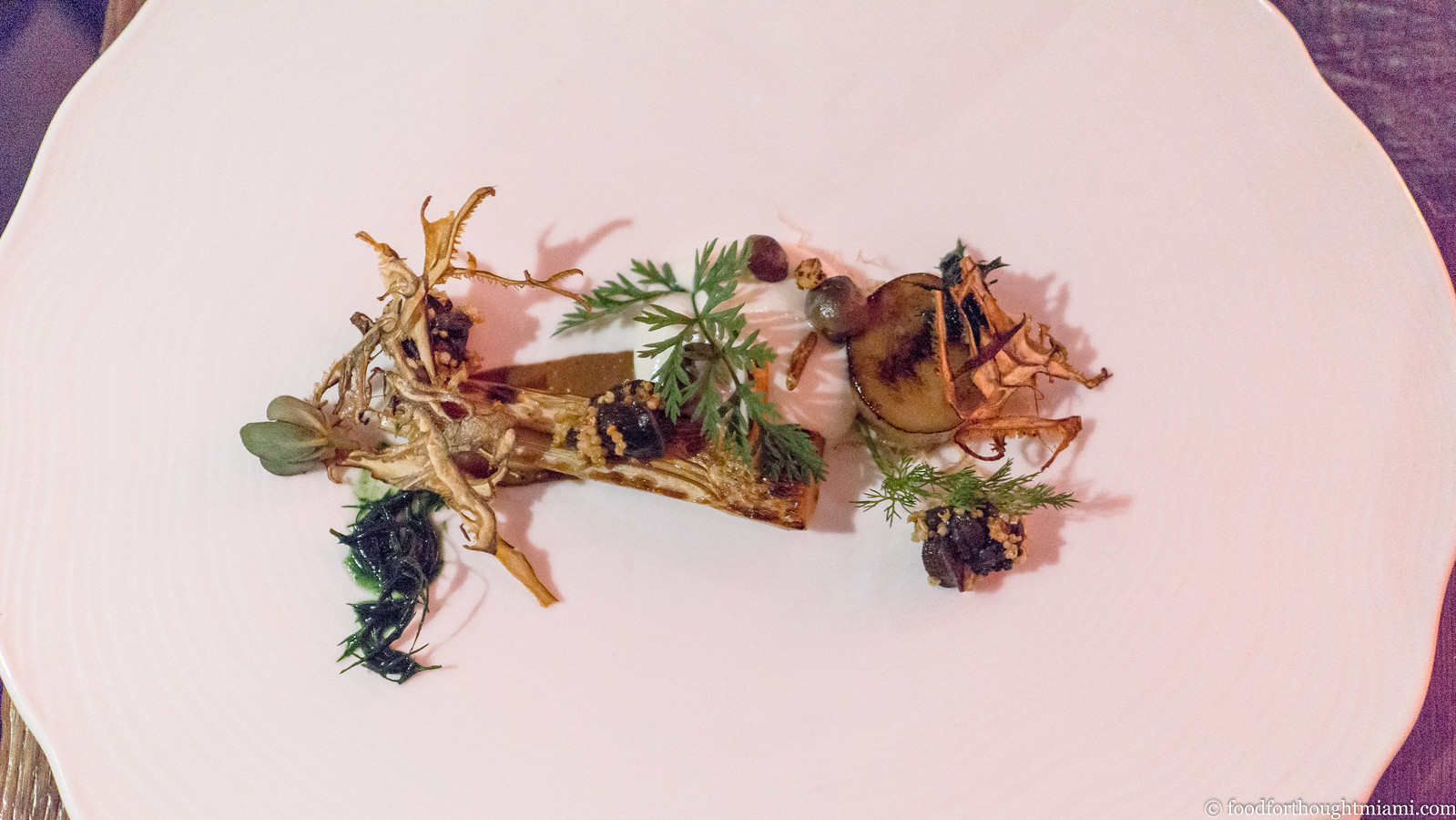 |
| fallen tree | heart of palm, snails, fungi, moss, spores - Alter / Central dinner |
"Fallen Tree" – Brad started with a caramelized tranche of heart of palm as the base of the dish, with the other components evoking a tropical forest floor: snails, dehydrated mushrooms, a tangle of green (seaweed?) moss, a pouffe of spring garlic mousse with pickled honshimeji mushroom "spores" poking up out of it.
(continued ...)
Thursday, December 29, 2016
best dishes of 2016: part 1
2016. Stick a fork in it. Put it on a boat, light it on fire and send it out to sea. Let me join in the chorus of those who wish this terrible, horrible, no good, very bad year a hearty fuck you and good riddance.
In the greater world, 2016 was lousy. So lousy that it often makes talking and writing about the food world, the way I usually do here, seem pretty trivial. But that food world can be a little corner of joy and connection, a place where people aim to make each other happy – and I suspect we can all use some of that. I've had more than my fair share of meals that made me happy this past year, and I'm incredibly grateful for the people who made them and the people with whom I got to share them. Here, then, are the best things I ate over the past year.
Despite that word "best," I make no pretense of this being any sort of objective listing, only my personal favorites of the places I had the good fortune to visit in 2016. They are not ranked, but rather are listed here in roughly chronological order. For ease of digestion, I'll be breaking this up into three parts.
(You can see pictures of all of them in this Best Dishes of 2016 flickr set).
My best dishes of 2016 list actually starts with New Years' Eve of 2015, which found us in Nashville, celebrating in style at Sean Brock's Husk (read my thoughts and see all my pictures from Husk Nashville):
Husk's NYE menu was a three-course affair which offered about five choices for each course. Before those arrived, though, we were brought an amuse bouche of thinly sliced Benton's country ham, unadorned but for a brush of coffee vinegar. Allan Benton's hams are pretty magical on their own, and the coffee vinegar offered the most subtle counterpoint of rounded bitterness to the salty, nutty pork. It was like an elemental version of red eye gravy, and it was a perfect bite.
Out of several really good dishes, my favorite were these roasted Rappahannock oysters, swimming in an herbaceous bone marrow butter, and topped with spoonfuls of Tennessee hackleback caviar. a great way to close out 2015.
"Royal red shrimp, a bisque made from their heads, rice middlins, bronze fennel" is a really long way to say "shrimp 'n' grits." But that's OK, because it was the best version I've ever had. Royal reds are a sweet, soft deep water shrimp from east coast waters that rank among my favorite crustaceans, here doing double duty with their flavorful heads used as a base for the sauce. That deep, rich oceanic bisque was a perfect pairing with the creamy rice middlins (broken rice grains with a texture much like corn grits).
From Nashville we moved on to Louisville, home of one of my favorite hotel / restaurant combinations: Proof on Main in the 21c Museum Hotel (read my thoughts and see all my pictures from Proof on Main).
The food at Proof has a southern accent, but not an overwhelmingly strong one: enough that you can tell where it's from. It's also picked up several other curious inflections along the way: Chef Wajda plays around with Korean, Caribbean, even North African flavors, but the patois somehow feels natural, not contrived.
These "roasted bones" are a good example. It seems like 90% of the bone marrow dishes I see on restaurant menus simply recite the Fergus Henderson liturgy of parsley salad and coarse salt. Here, instead, Wajda brushes the bones with an XO butter, then plates them with an assortment of pungent house-made kimchis. There's a subtle nod back Fergus' way with a light salad dressed in a sesame miso vinaigrette, but also a bunch of strong, assertive flavors to play against the sticky richness of the marrow. It was an outstanding dish.
After our trek through Memphis, Nashville and Louisville, I got back home in time for a brunch collaboration between two of my favorite Miami chefs, Jeremiah Bullfrog of the gastroPod and Kris Wessel, last seen at Oolite and the beloved Red Light, and now working on opening a barbecue spot in Little Haiti (read my thoughts and see all my pictures from this gastroPod / Kris Wessel brunch).
The standout for me may have been the short rib "carpaccio" – thinly sliced boneless short rib cooked at low temp to bring it up to medium rare and melt all the connective tissue, brushed with warmed beef fat, and plated with slivers of fresh and dried pears, nutty asiago cheese and a drizzle of olive oil.
For the first of several collaborative dinners hosted by chef Brad Kilgore at his restaurant, Alter, in Wynwood, he teamed up with Fabian Von Hauske and Jeremiah Stone of New York's Contra. It was an auspicious start, and these were some of the best meals I had all year (read my thoughts and see all my pictures from the Contra / Alter dinner).
Dish of the night? For me, it was this combination of beef tendon and conch in a pool of creamy, nutty sauce, given funky depth by XO sauce and bitter contrast with sprigs of radicchio tardivo. It was a great, unexpected combination of flavors, but even more so was all about the unusual, exciting textures of the components: the gelatinous tendon, the spingy conch, the subtle crunch of the radicchio, the creamy sauce.
(continued ...)
In the greater world, 2016 was lousy. So lousy that it often makes talking and writing about the food world, the way I usually do here, seem pretty trivial. But that food world can be a little corner of joy and connection, a place where people aim to make each other happy – and I suspect we can all use some of that. I've had more than my fair share of meals that made me happy this past year, and I'm incredibly grateful for the people who made them and the people with whom I got to share them. Here, then, are the best things I ate over the past year.
Despite that word "best," I make no pretense of this being any sort of objective listing, only my personal favorites of the places I had the good fortune to visit in 2016. They are not ranked, but rather are listed here in roughly chronological order. For ease of digestion, I'll be breaking this up into three parts.
(You can see pictures of all of them in this Best Dishes of 2016 flickr set).
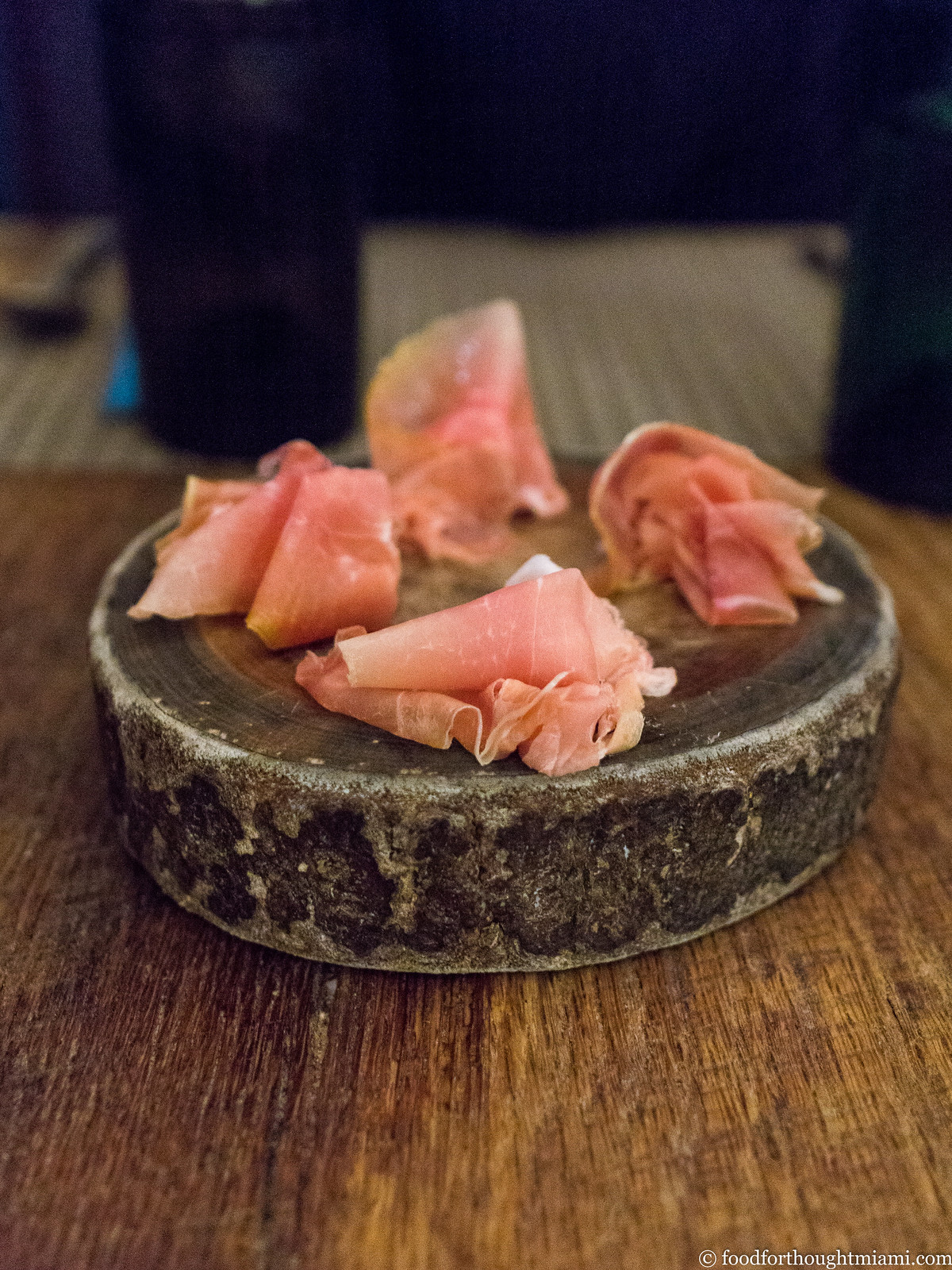 |
| Benton's ham brushed with coffee vinegar - Husk Nashville |
Husk's NYE menu was a three-course affair which offered about five choices for each course. Before those arrived, though, we were brought an amuse bouche of thinly sliced Benton's country ham, unadorned but for a brush of coffee vinegar. Allan Benton's hams are pretty magical on their own, and the coffee vinegar offered the most subtle counterpoint of rounded bitterness to the salty, nutty pork. It was like an elemental version of red eye gravy, and it was a perfect bite.
 |
| Rappahannock oysters with bone marrow butter and TN hackleback caviar - Husk Nashville |
 |
| royal red shrimp, a bisque made from their heads, rice middlins, bronze fennel - Husk Nashville |
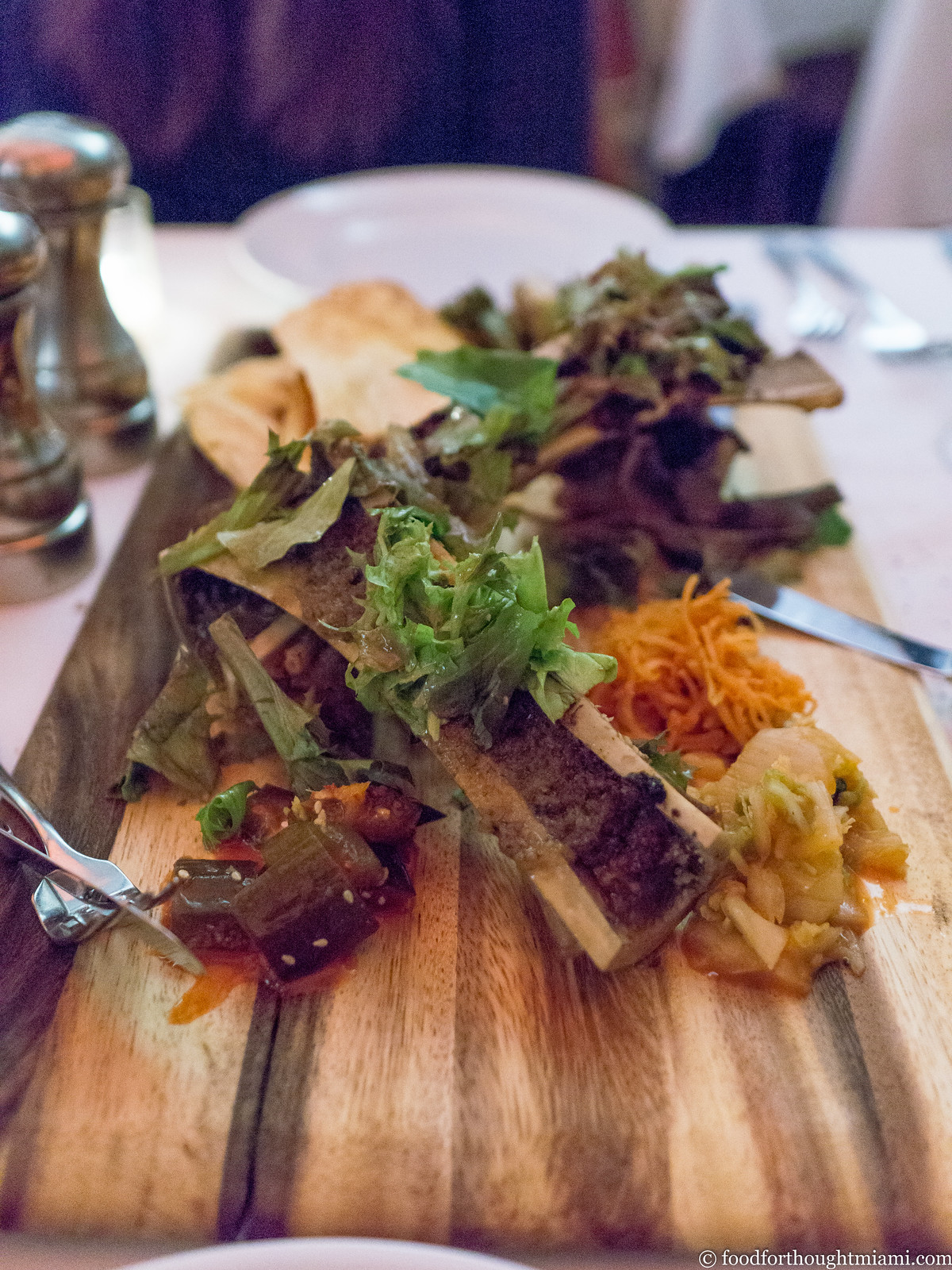 |
| roasted bones, XO butter, kim chee, radish, lettuces, sesame miso vin - Proof on Main |
The food at Proof has a southern accent, but not an overwhelmingly strong one: enough that you can tell where it's from. It's also picked up several other curious inflections along the way: Chef Wajda plays around with Korean, Caribbean, even North African flavors, but the patois somehow feels natural, not contrived.
These "roasted bones" are a good example. It seems like 90% of the bone marrow dishes I see on restaurant menus simply recite the Fergus Henderson liturgy of parsley salad and coarse salt. Here, instead, Wajda brushes the bones with an XO butter, then plates them with an assortment of pungent house-made kimchis. There's a subtle nod back Fergus' way with a light salad dressed in a sesame miso vinaigrette, but also a bunch of strong, assertive flavors to play against the sticky richness of the marrow. It was an outstanding dish.
 |
| carpaccio: short rib, pear, asiago - gastroPod |
The standout for me may have been the short rib "carpaccio" – thinly sliced boneless short rib cooked at low temp to bring it up to medium rare and melt all the connective tissue, brushed with warmed beef fat, and plated with slivers of fresh and dried pears, nutty asiago cheese and a drizzle of olive oil.
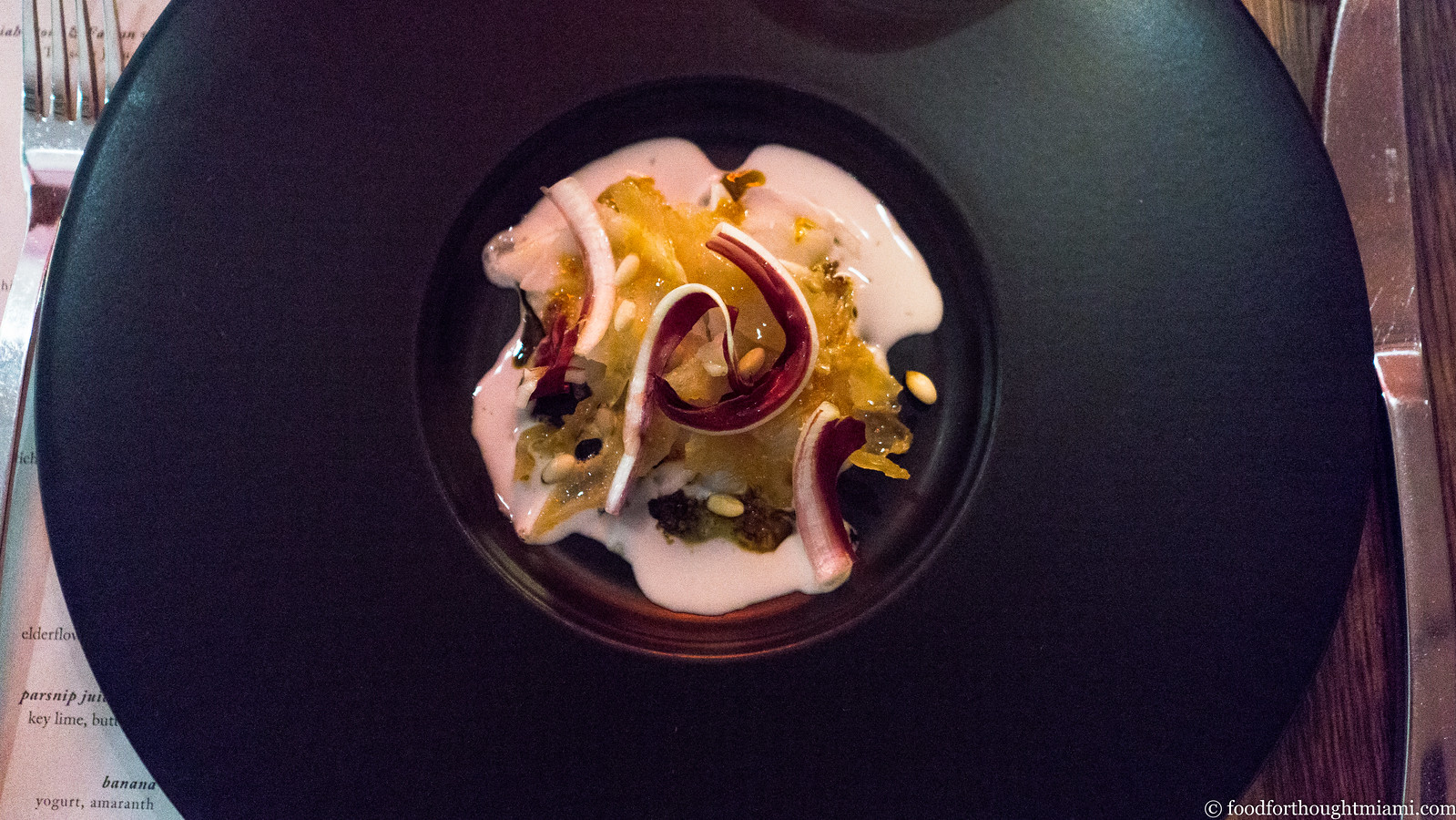 |
| tendon and conch, tardivo, pine nut, XO - Contra / Alter dinner |
Dish of the night? For me, it was this combination of beef tendon and conch in a pool of creamy, nutty sauce, given funky depth by XO sauce and bitter contrast with sprigs of radicchio tardivo. It was a great, unexpected combination of flavors, but even more so was all about the unusual, exciting textures of the components: the gelatinous tendon, the spingy conch, the subtle crunch of the radicchio, the creamy sauce.
(continued ...)
Tuesday, November 22, 2016
Willows Inn | Lummi Island, Washington | October 2016
Our first visit to Willows Inn was almost exactly three years ago. It still stands out as one of my most memorable dining experiences. (I wrote quite a bit about it here.) It was so good, in fact, that when we finally made a return visit last month, just seeing this dock – for the Whatcom Chief ferry that traverses between mainland Washington and Lummi Island – triggered a Pavlovian reaction.
There's nothing particularly showy or ostentatious about chef Blaine Wetzel's cooking. Quite the opposite, he willingly sets his ego aside and let the ingredients take center stage. That's not to diminish the skill with which he handles the wonderful things he finds in this little corner of the world, but rather to say that he really knows how to tell a story of time and place through a meal, eschewing unnecessary embellishment in favor of clarity.
So here, then, is the story of Willows Inn, and Lummi Island, on October 9, 2016.[1] More pictures, less words from me this time. (You can see all the pictures in this Willows Inn - October 2016 flickr set.)
We arrived early afternoon, dropped off our bags, were happy to see the smokehouse in action, and took a long walk on Sunset Beach, which stretches along the shore just beneath the inn. Wetzel has added a brief mid-day menu of simple things to nibble on before dinner, but our timing was off and the kitchen was already gearing up for dinner service by the time we got back to the inn.
As on our first visit, the meal starts with a series of snacks; but this time, they were served on the patio and in the Inn's cozy living room, rather than the dining room. Since there is only one dinner service a night, all the guests gather at the same time, and the atmosphere is more casual dinner party than stuffy tasting menu temple.
First, an assortment of raw, shelled nuts, paired with Eaglemount cider, produced in Port Townsend on the tip of the Olympic Peninsula. An old favorite, undulating ribbons of crispy kale, daubed with a paste of rye crumbs and black truffle. And a new item, for me anyway, sheets of crisp, vibrant pink potatoes, sandwiching a creamy ragout of cauliflower mushroom.
Another old favorite: a fragile, crisp crepe shell encasing steelhead roe and a maple cream, capped with finely snipped chives on the ends. This is just perfect. Followed by a new (for me), perfect bite: puffy, savory doughnuts, filled with silky smoked black cod, and sprinkled with sea salt and dried seaweed. I could eat a dozen of these.
(continued ...)
Subscribe to:
Posts (Atom)






